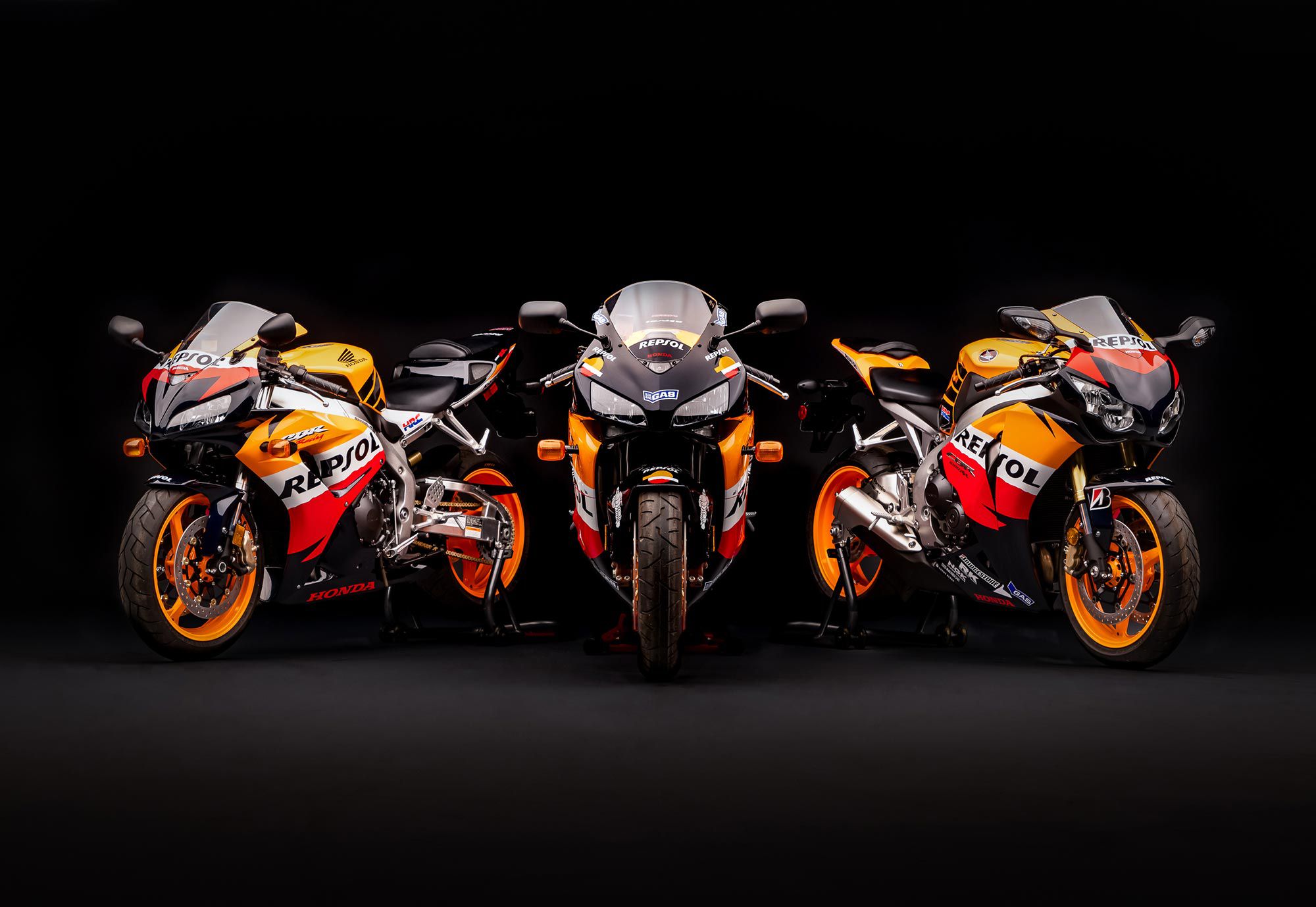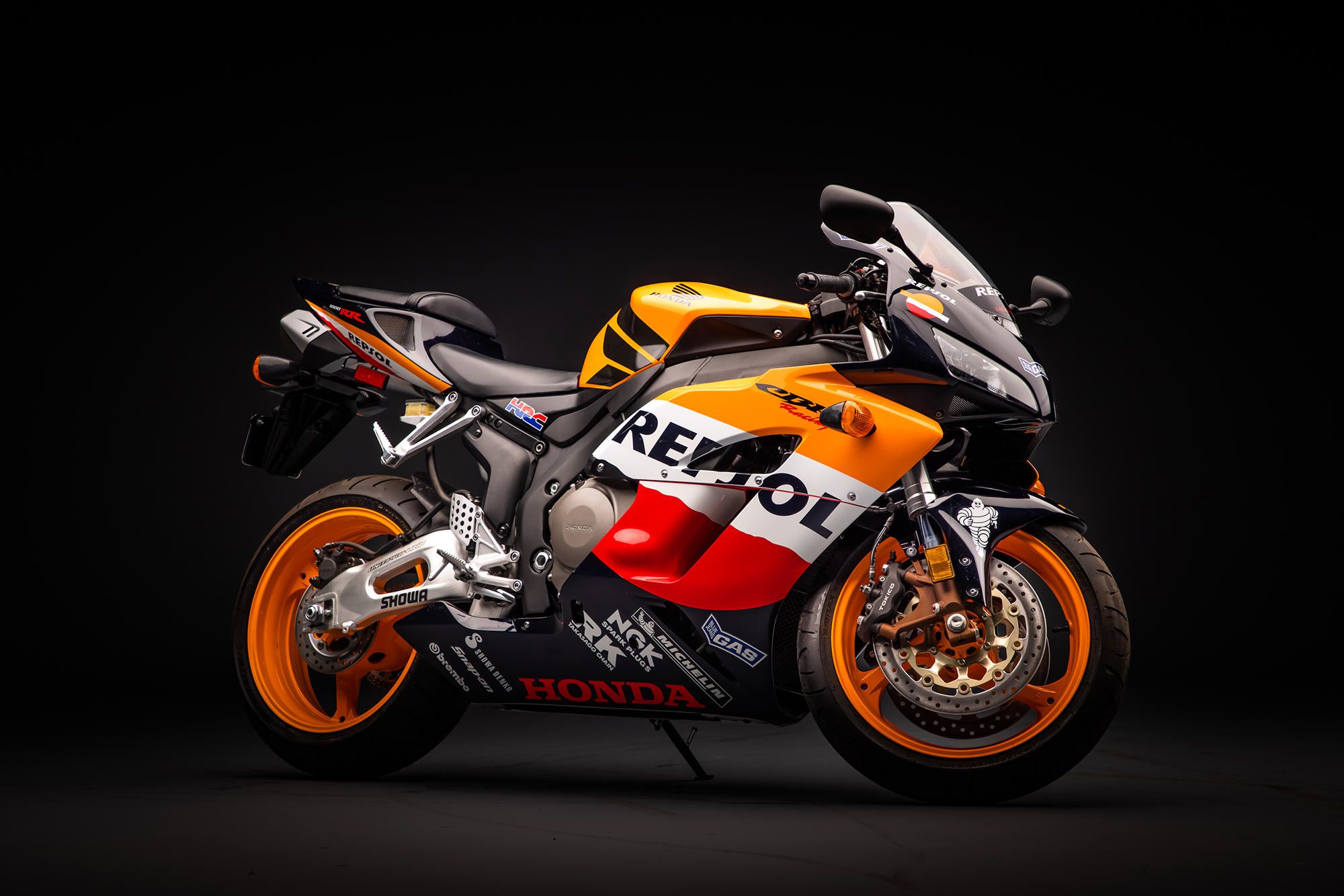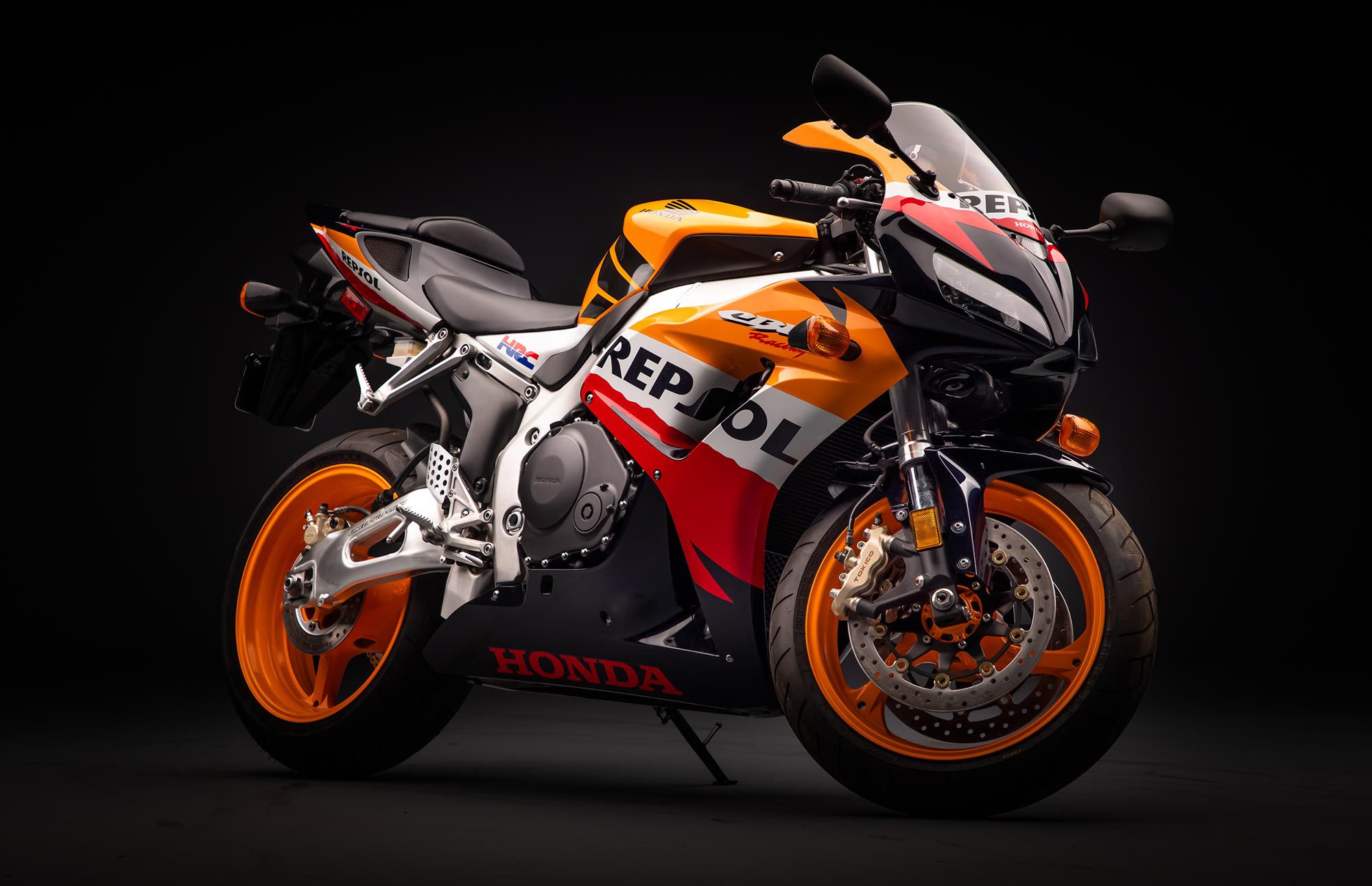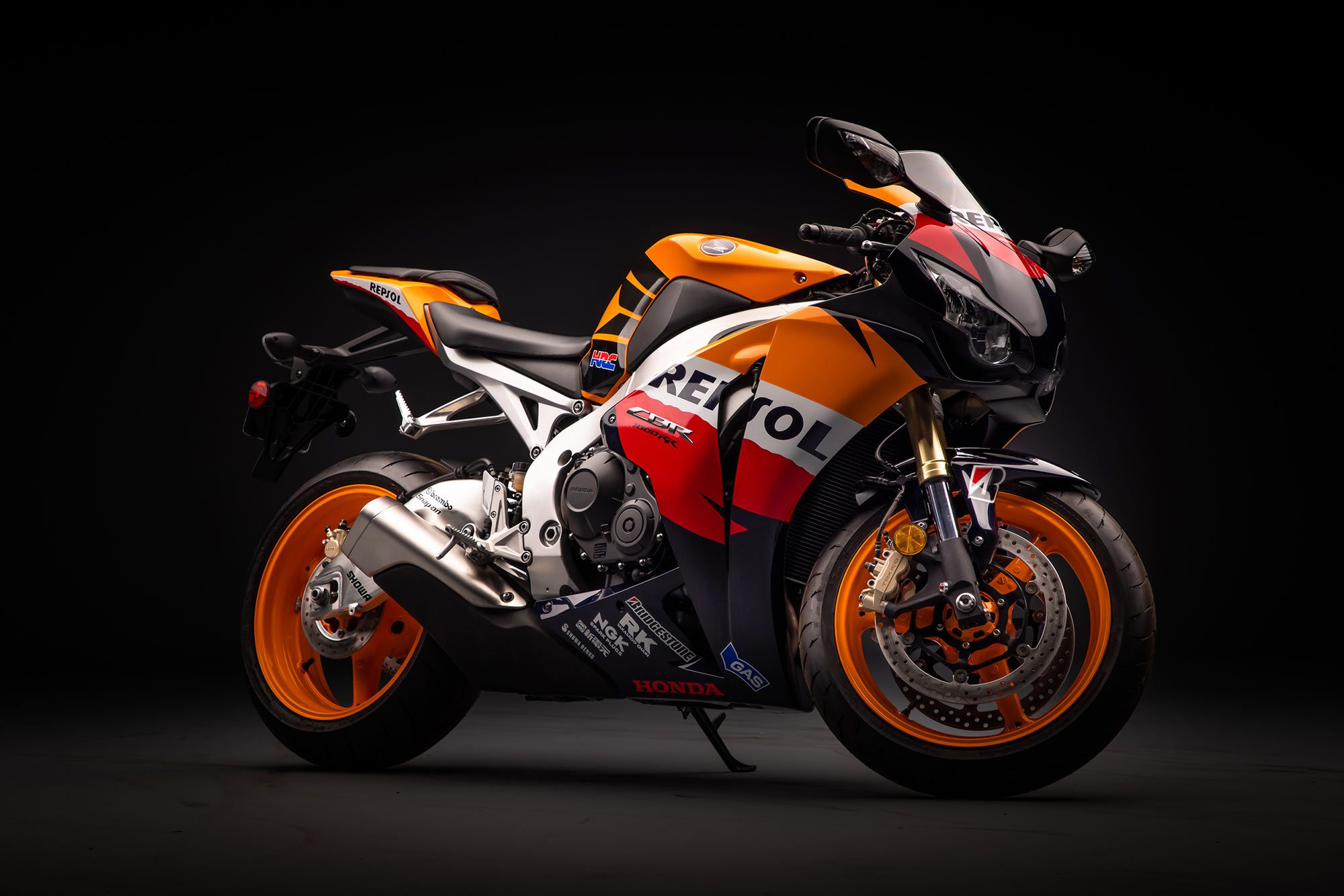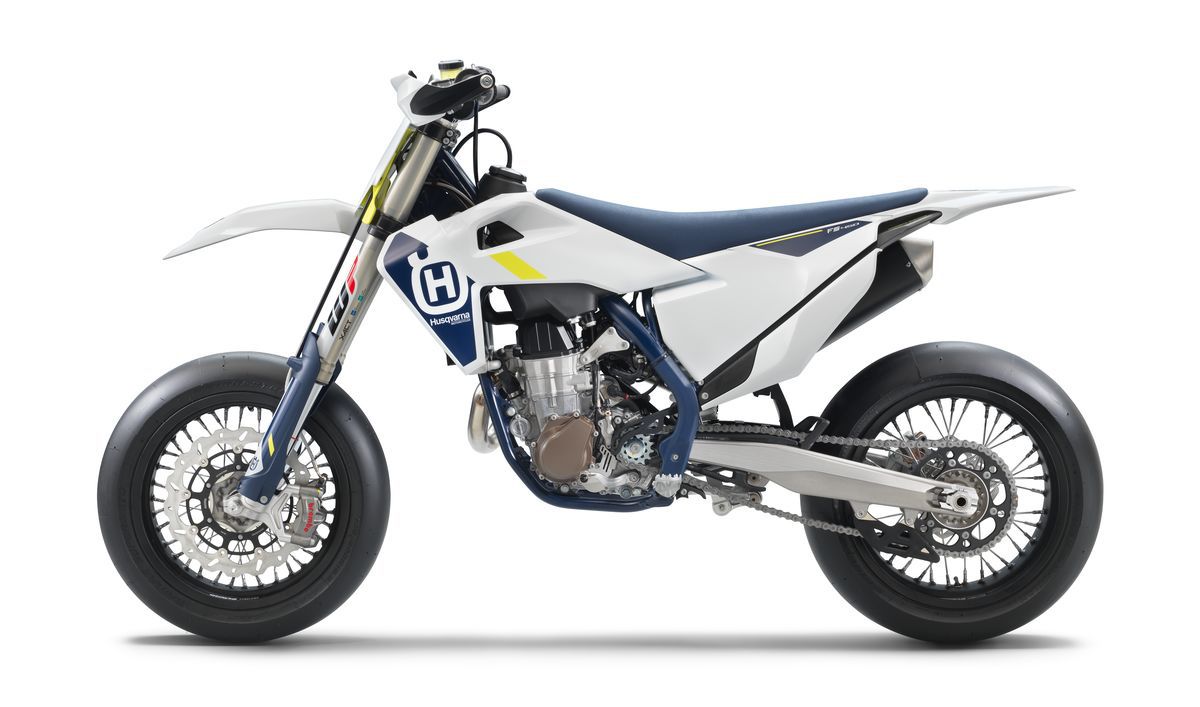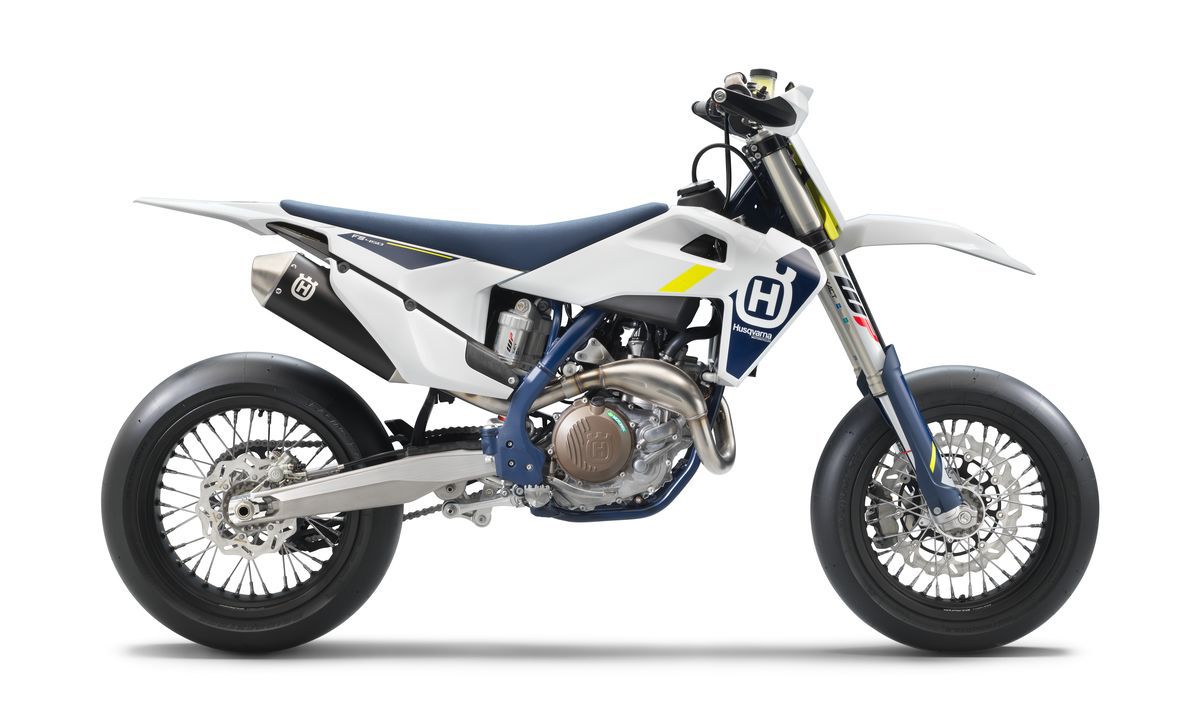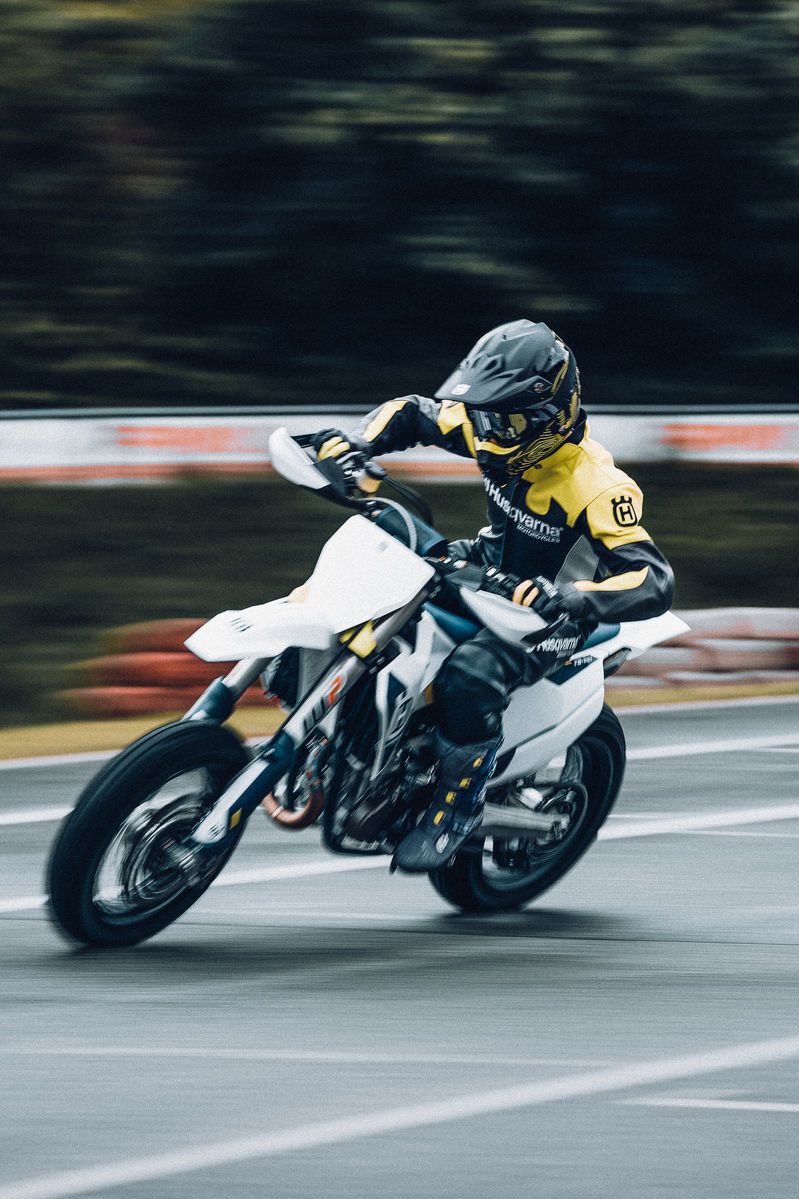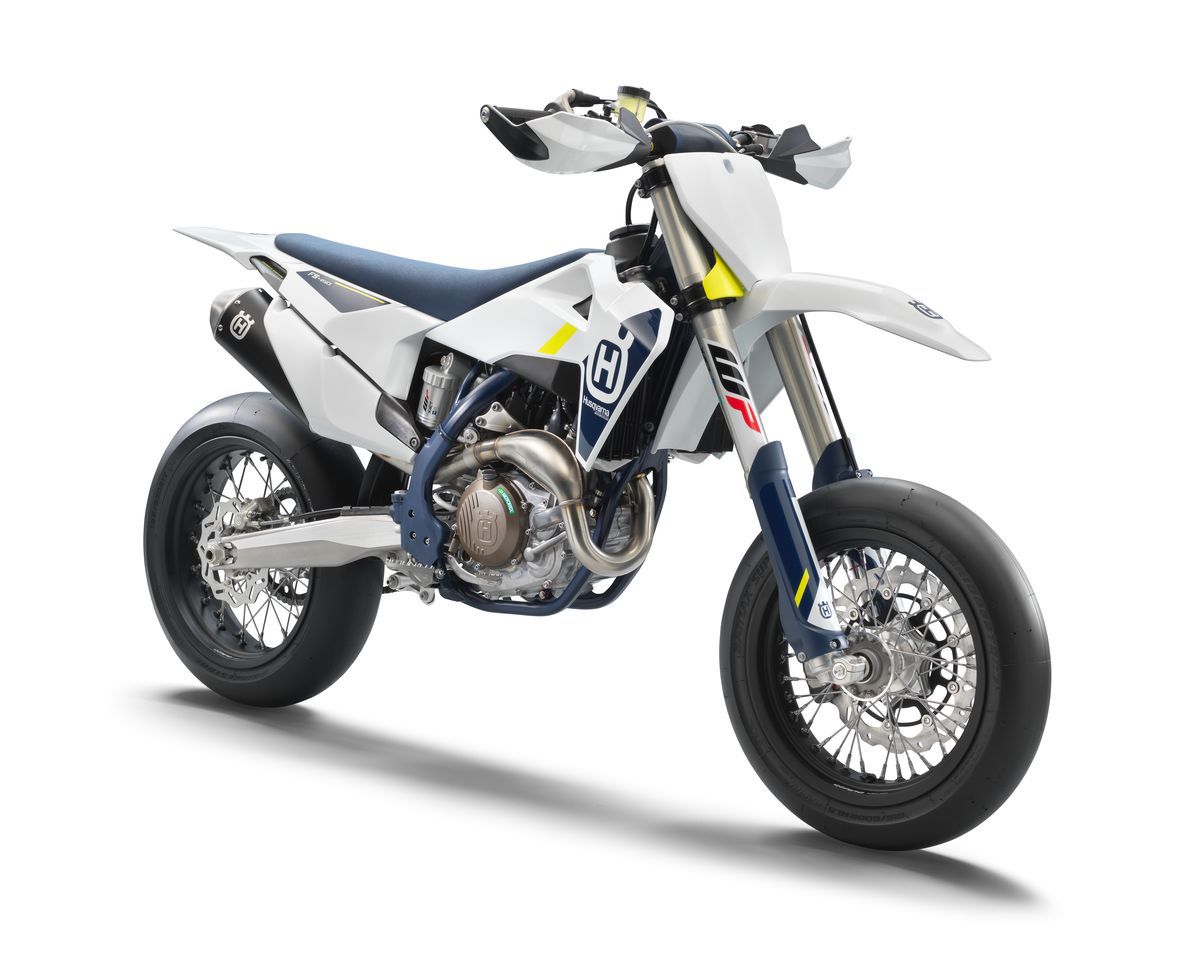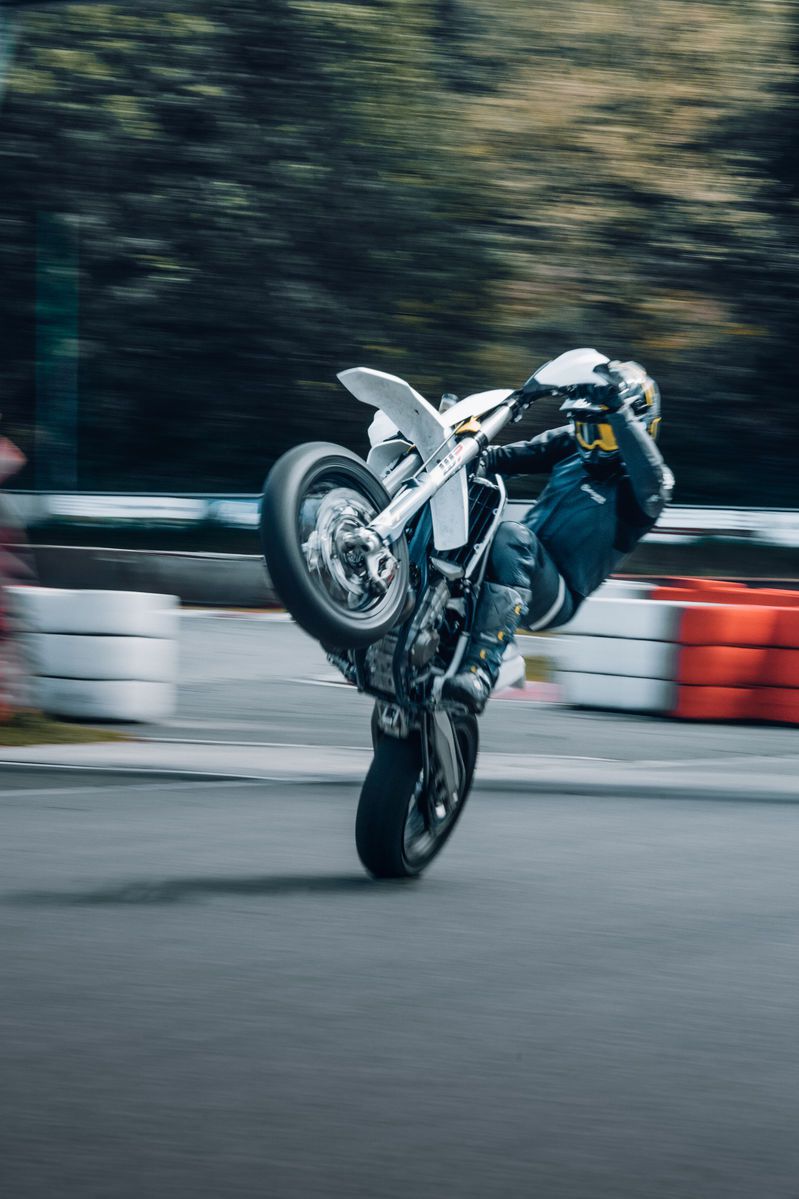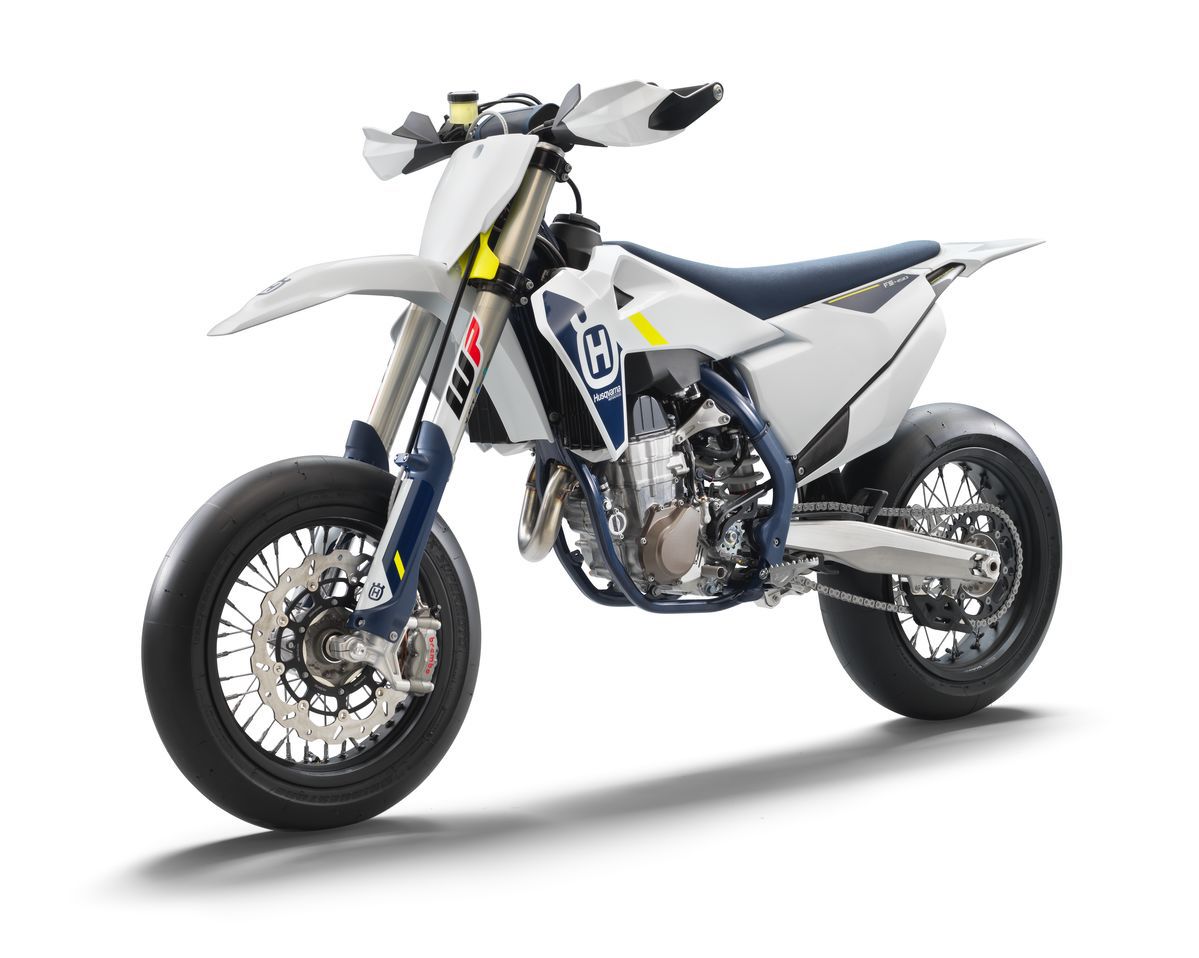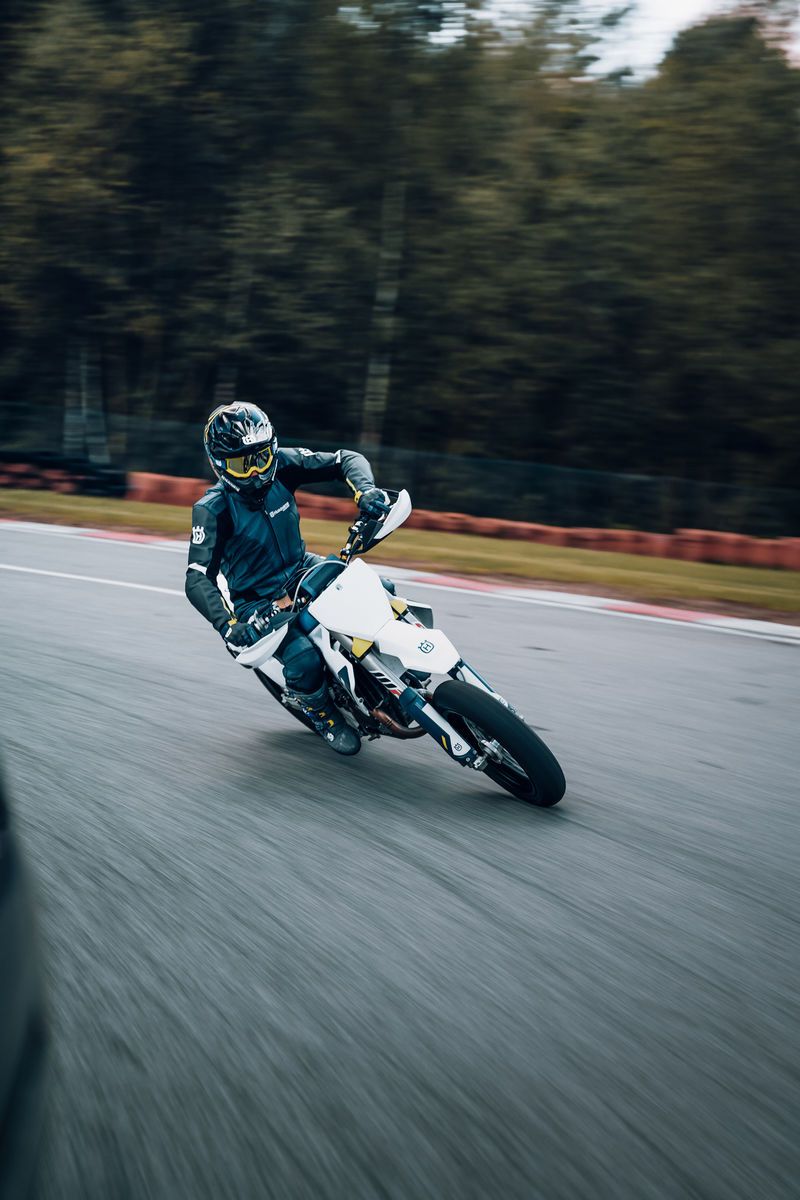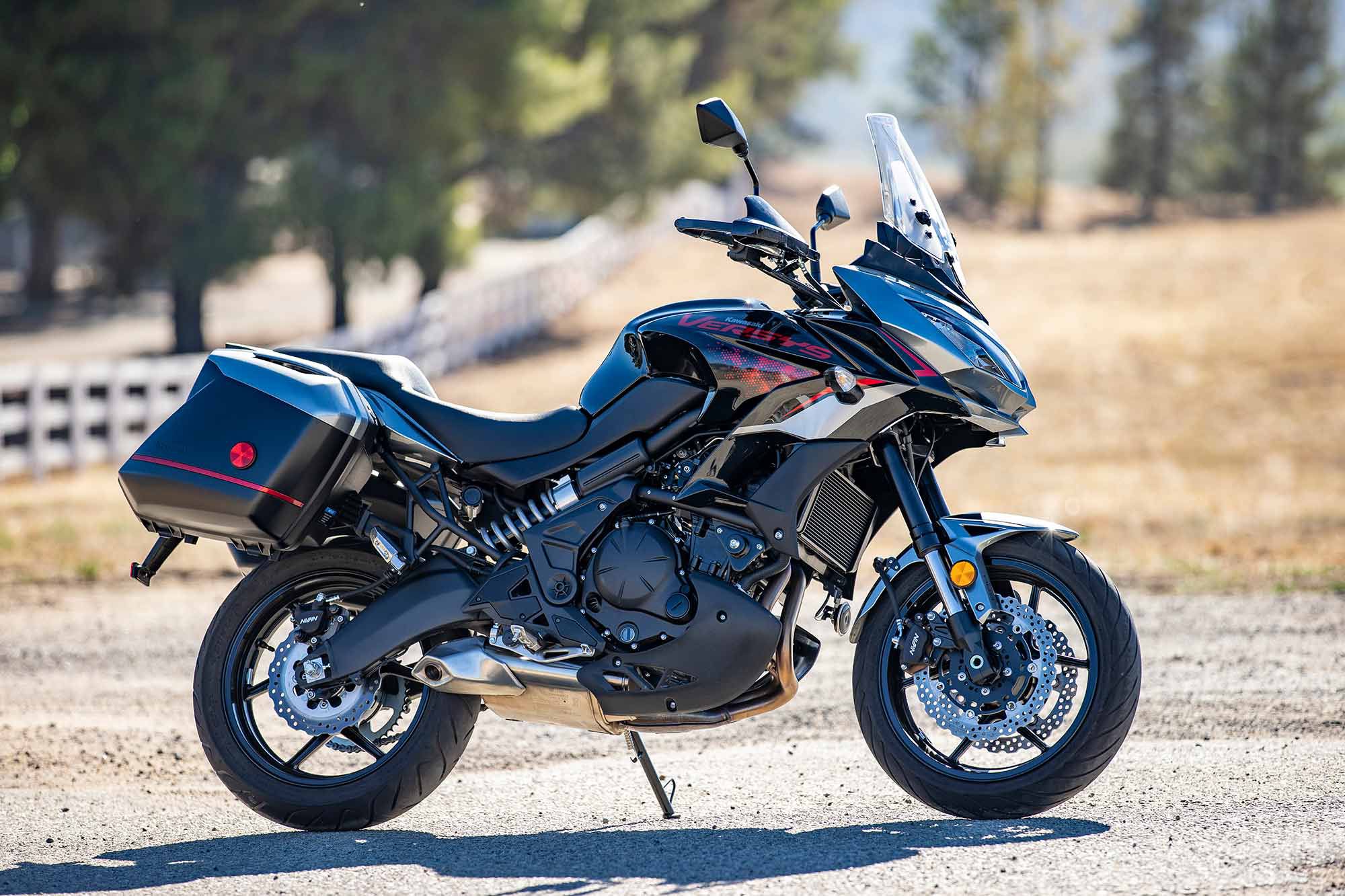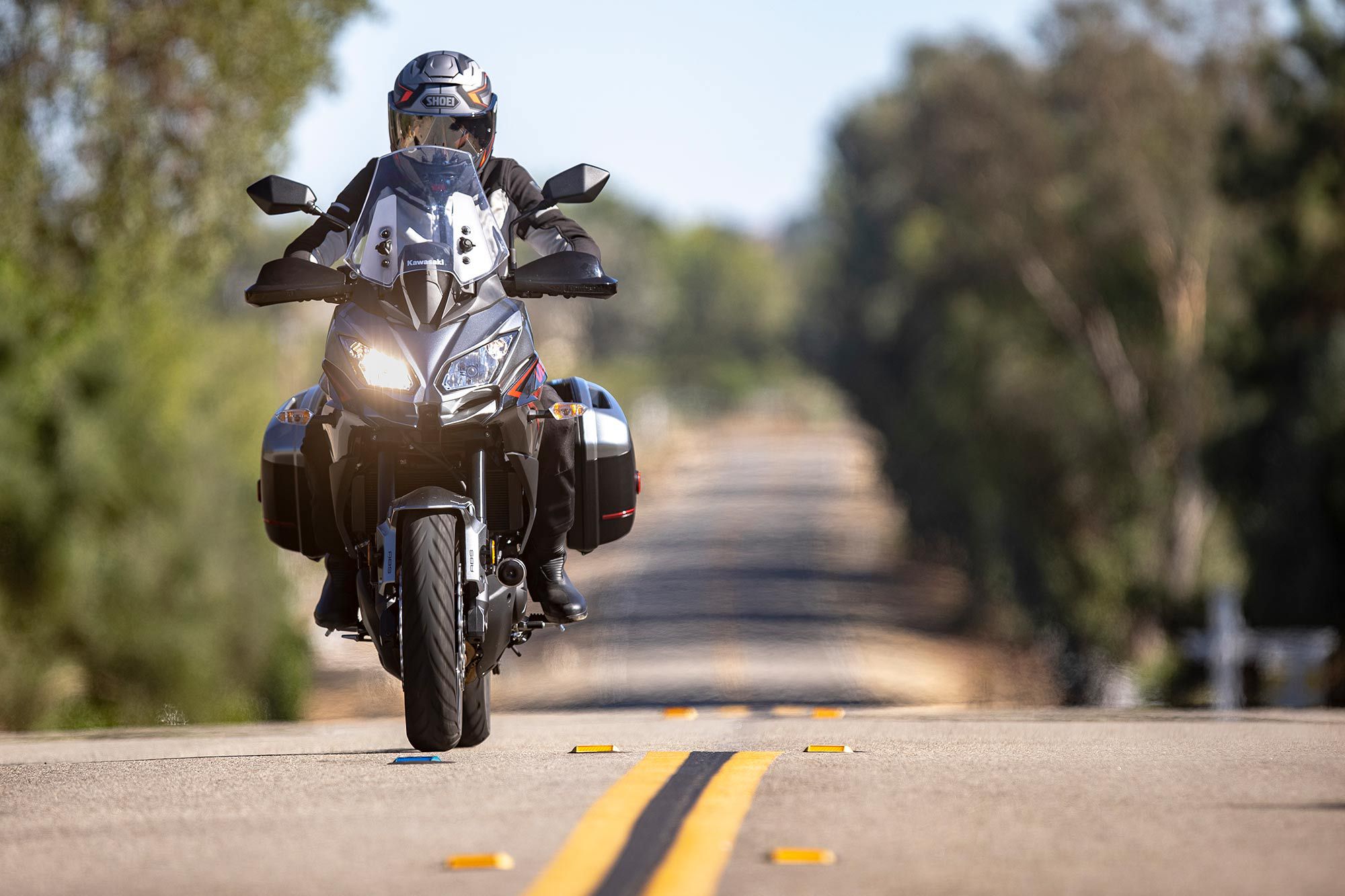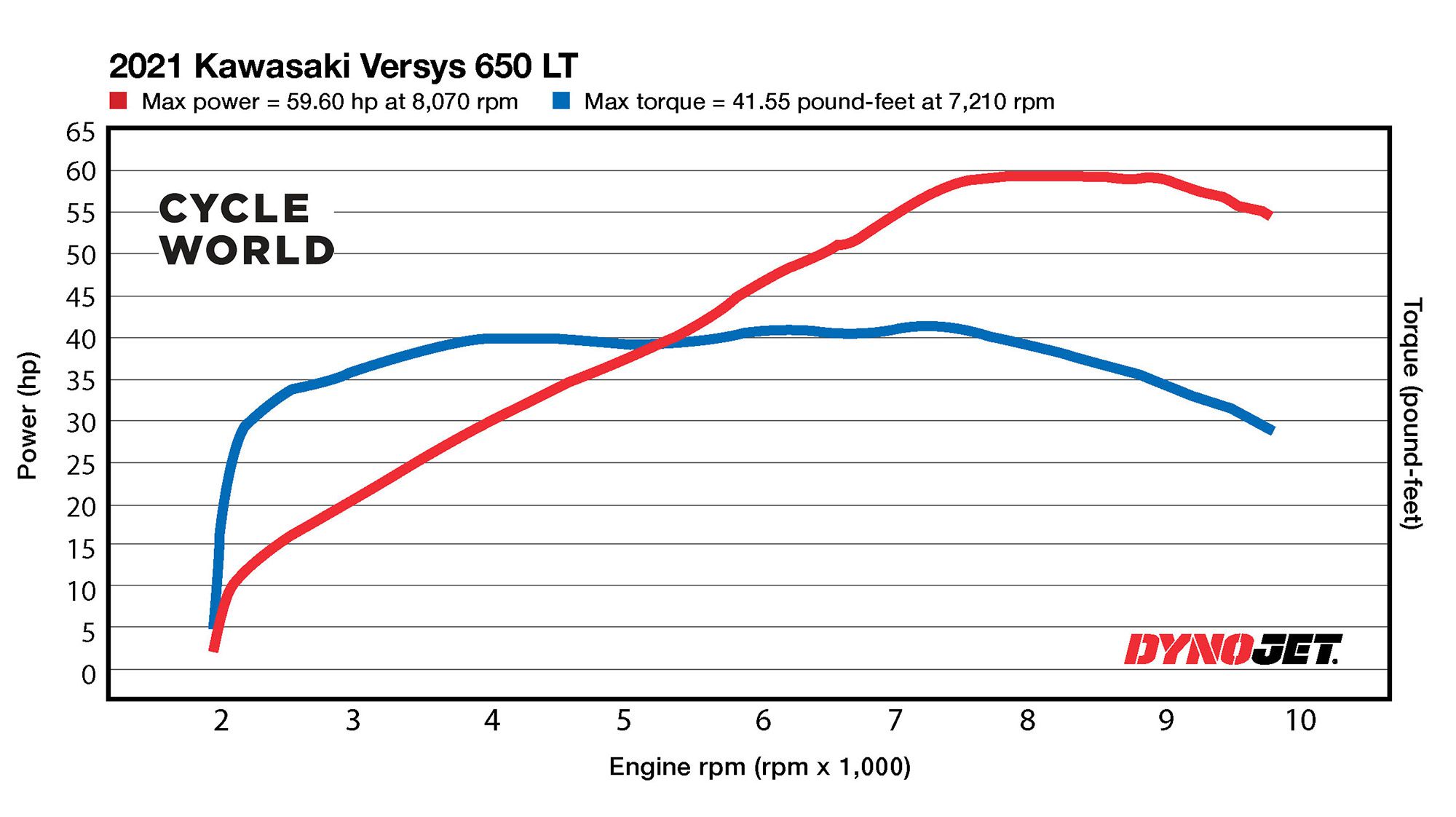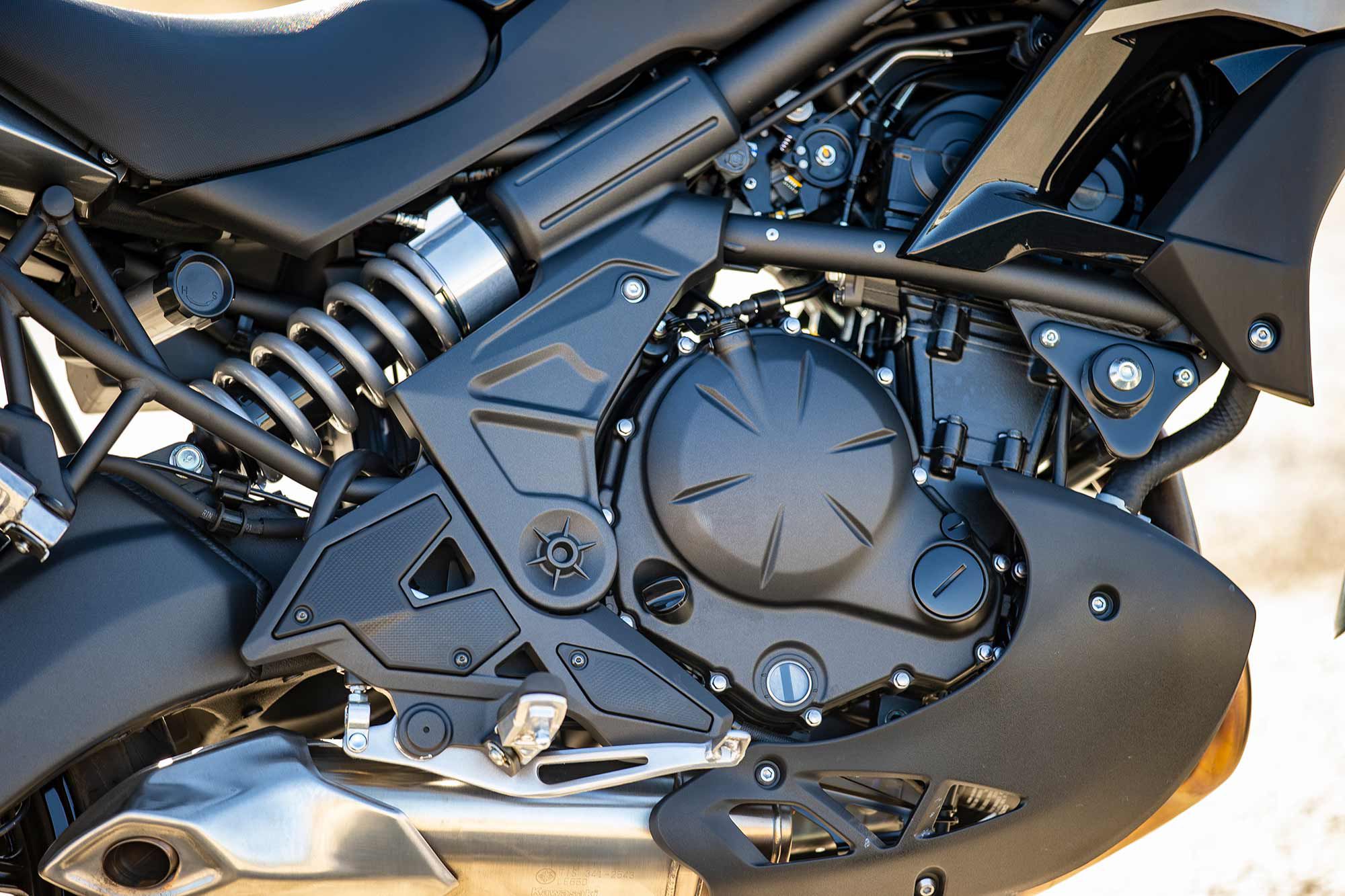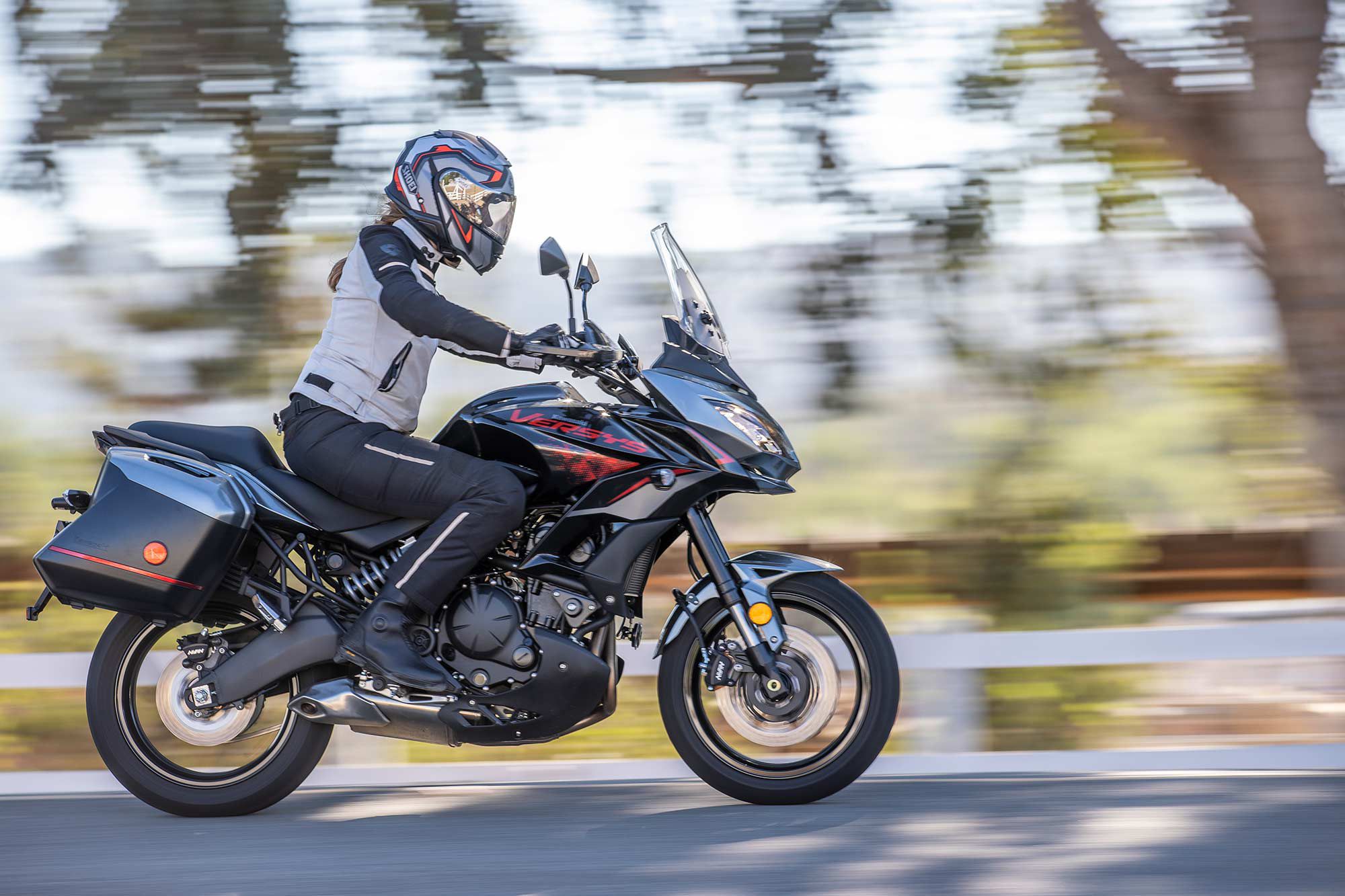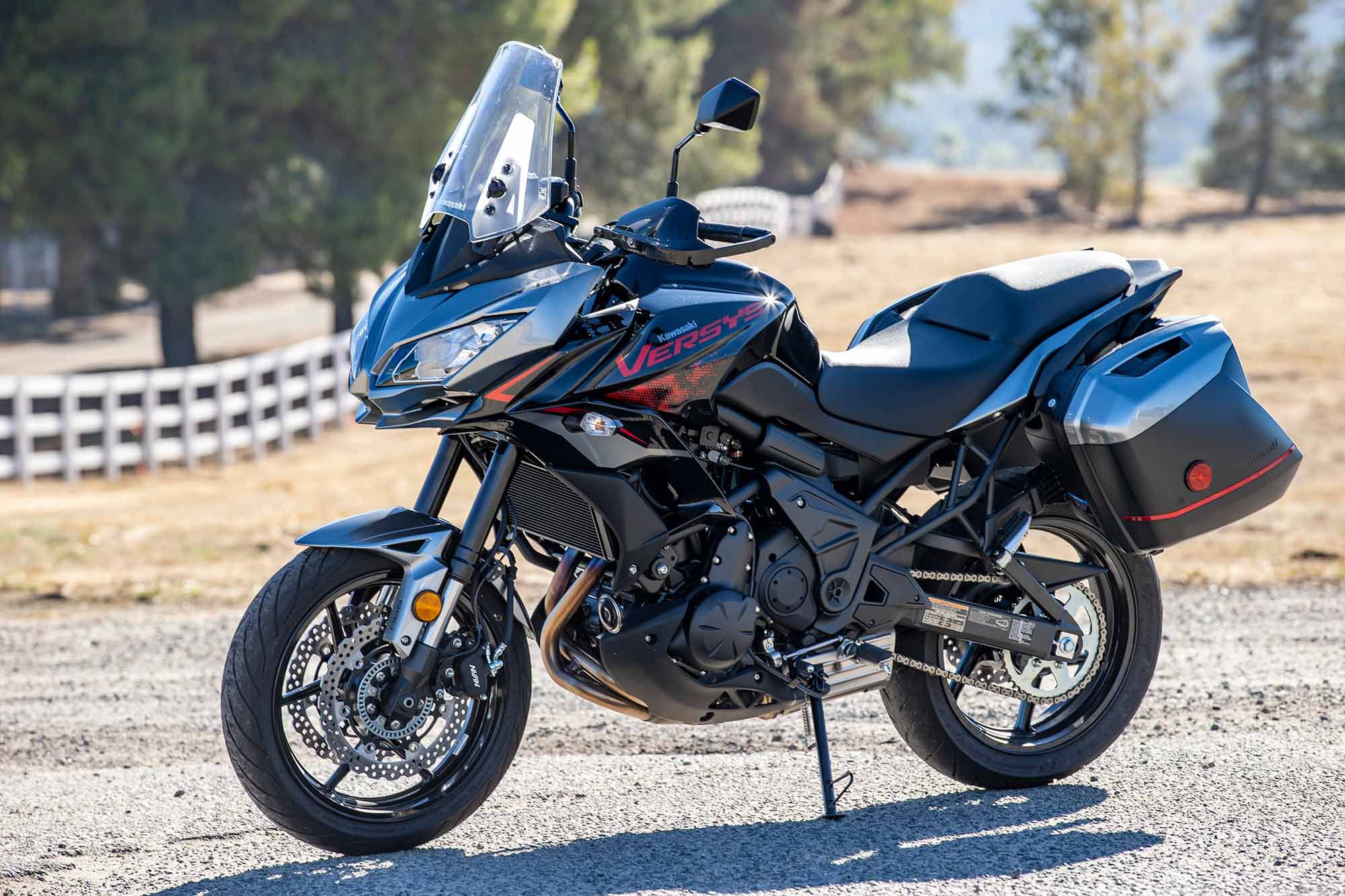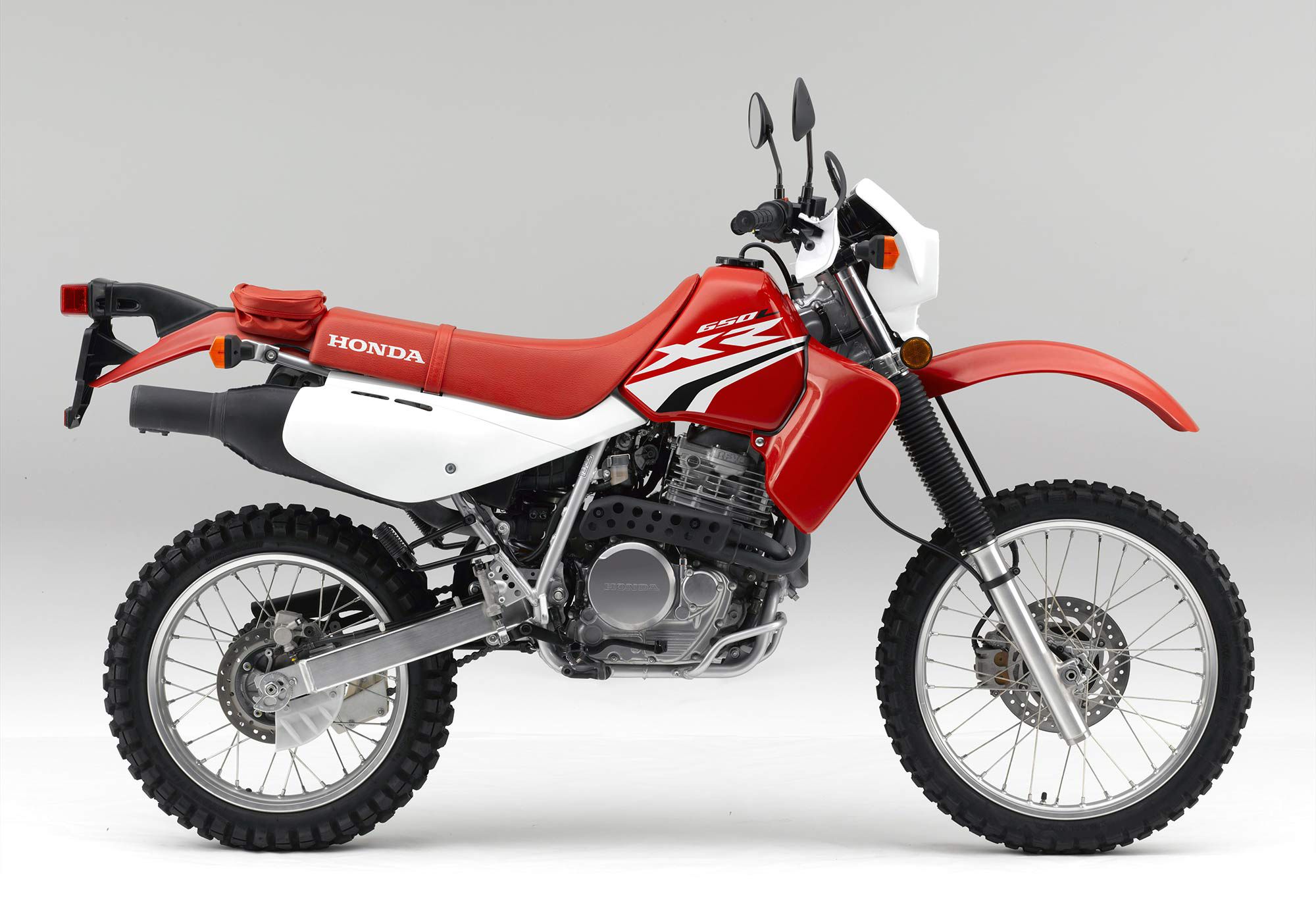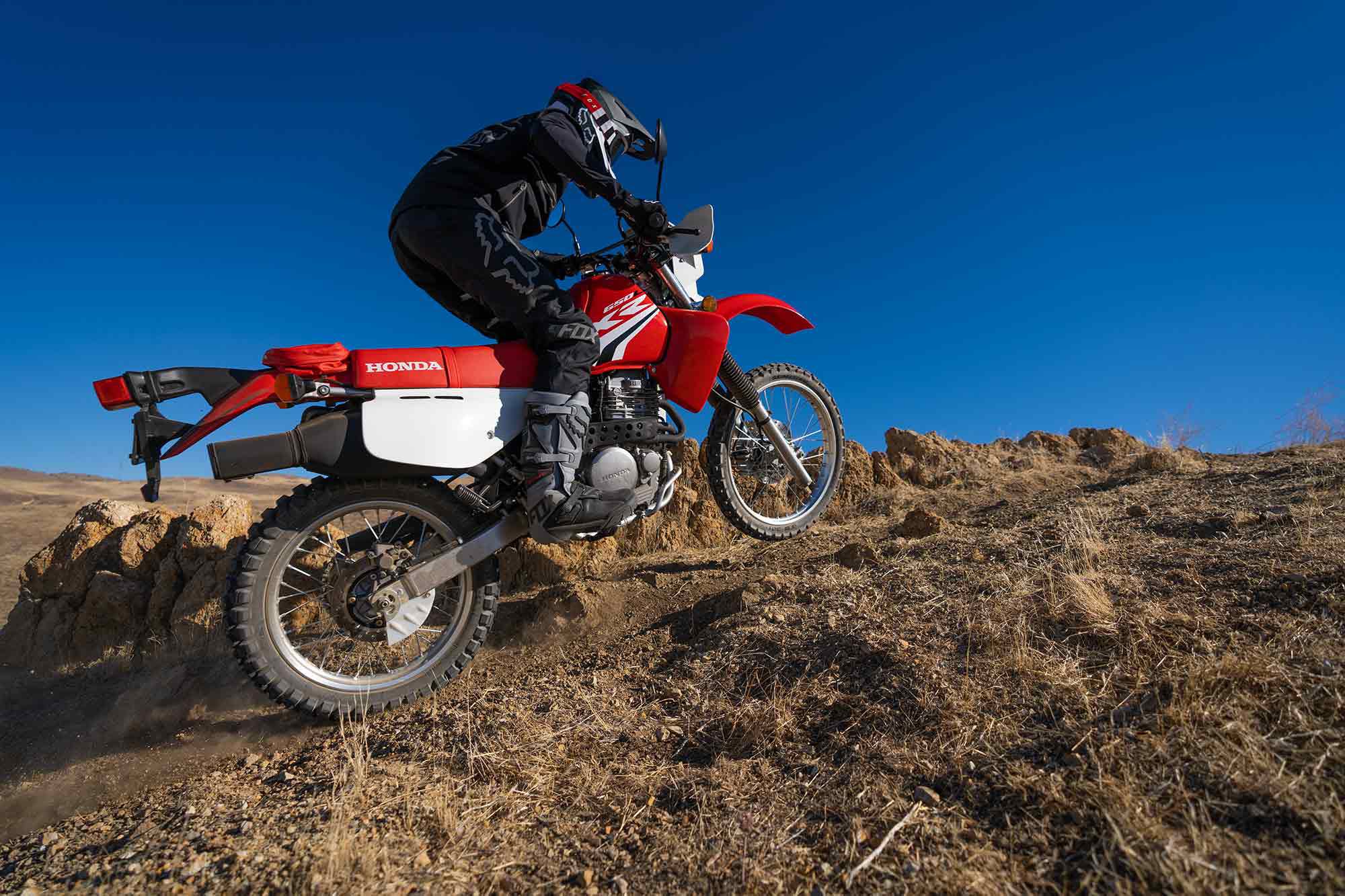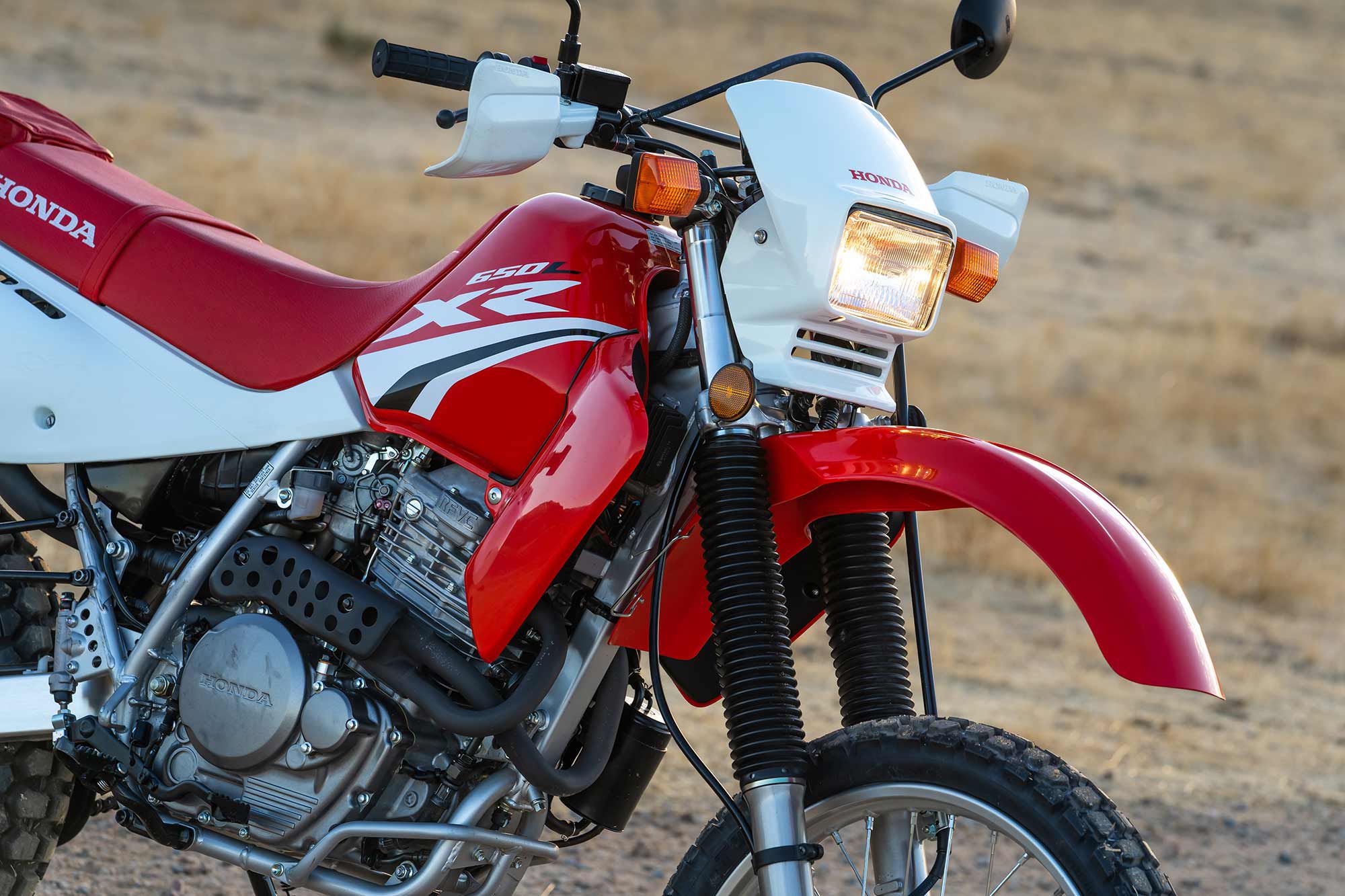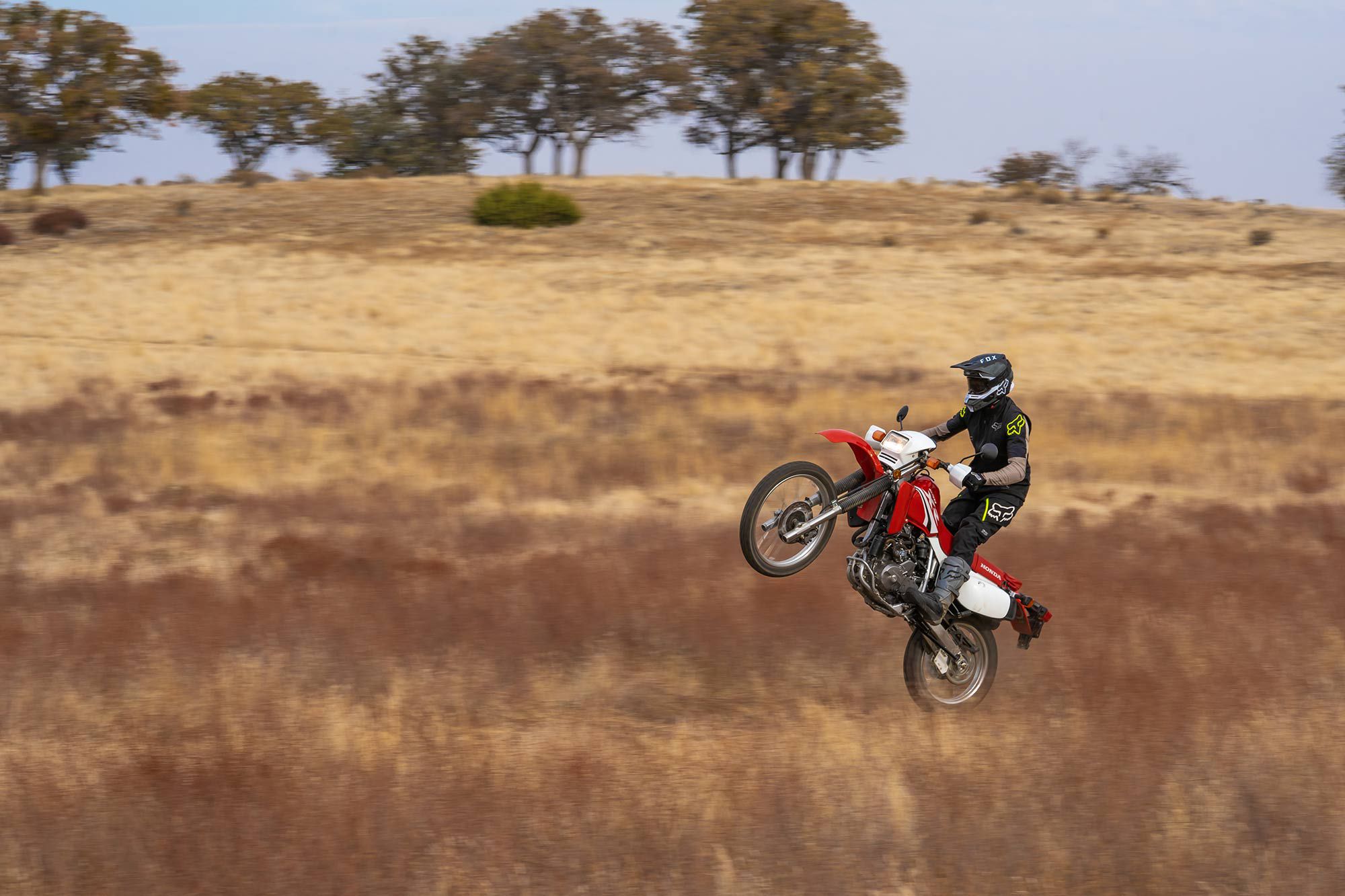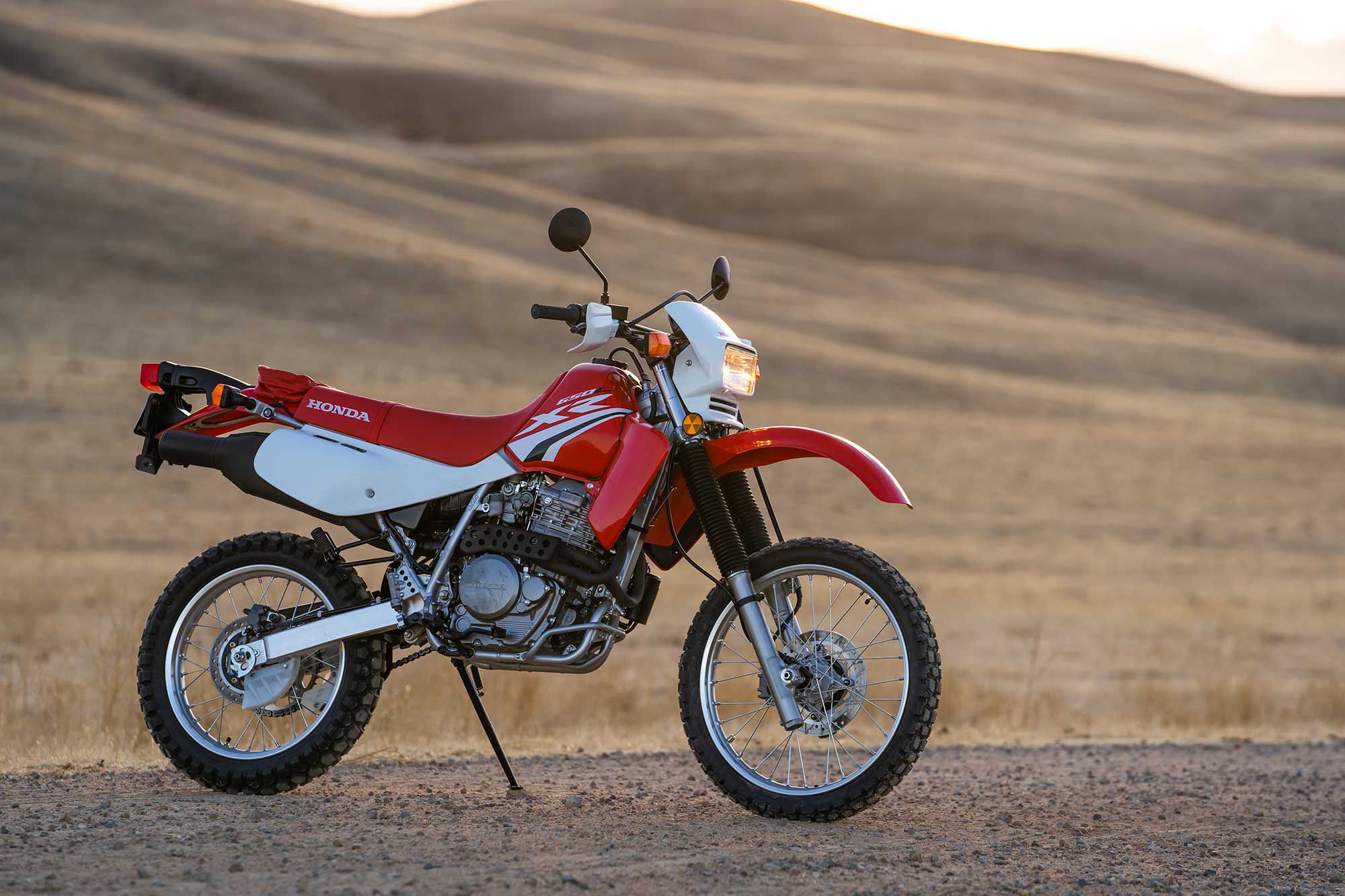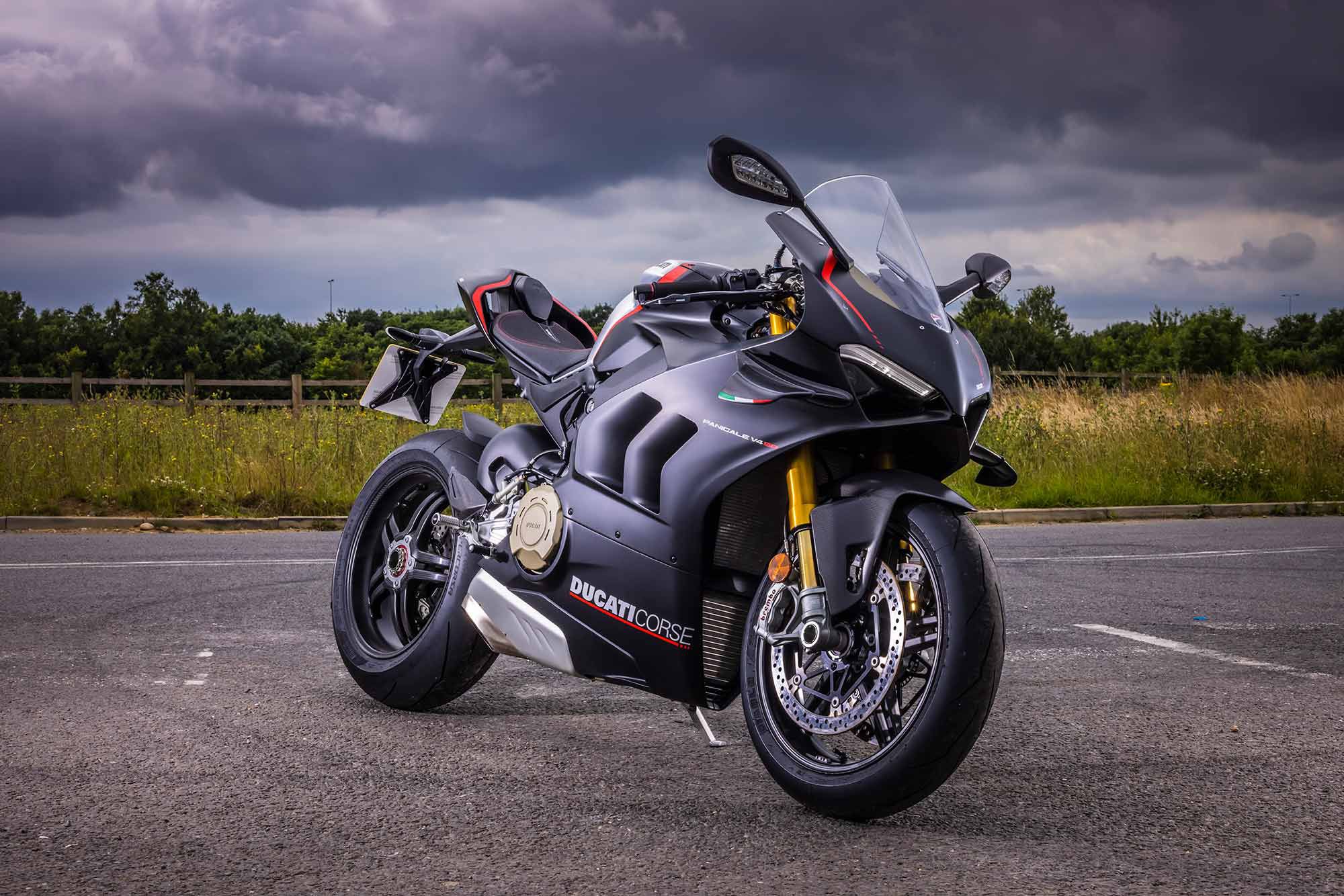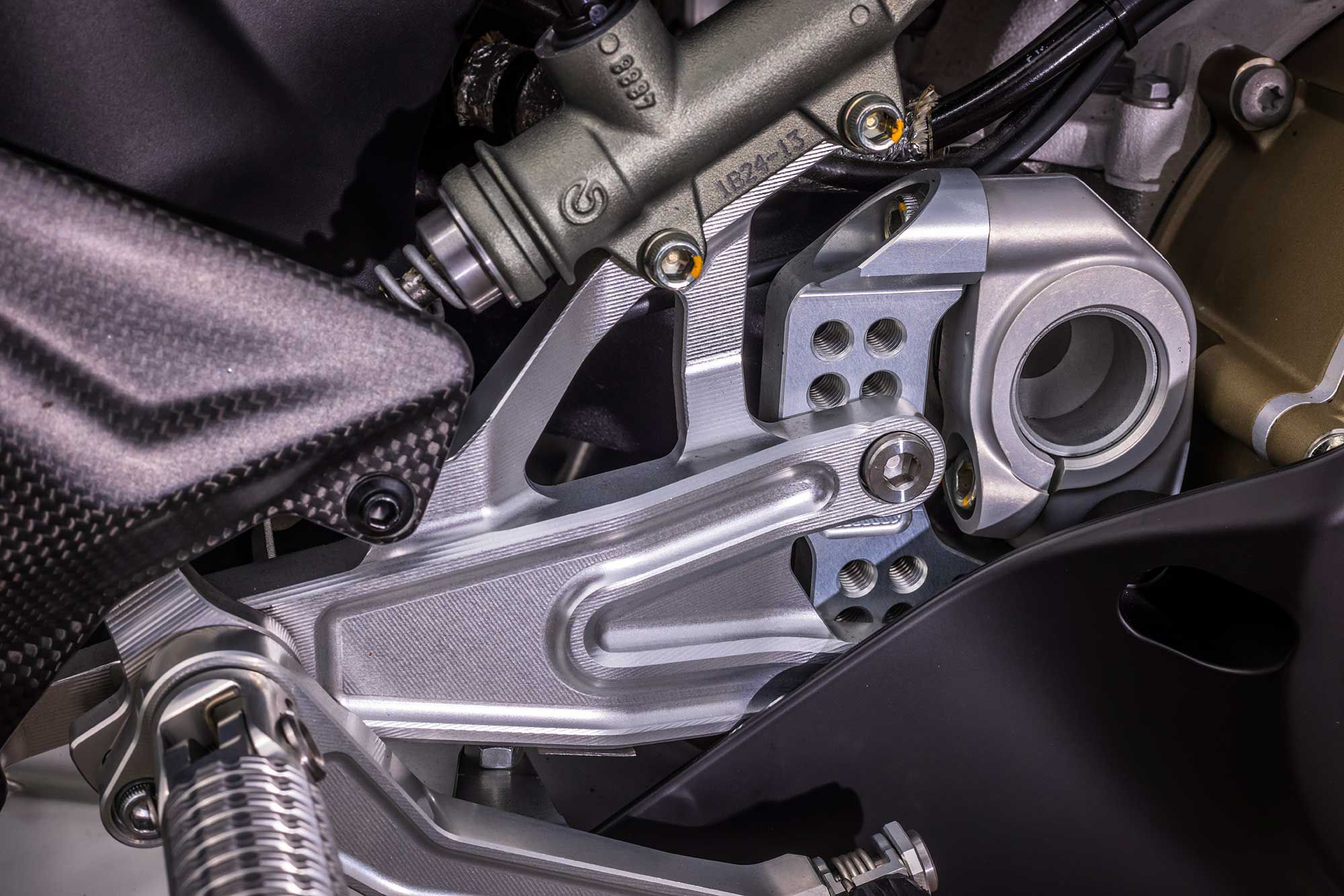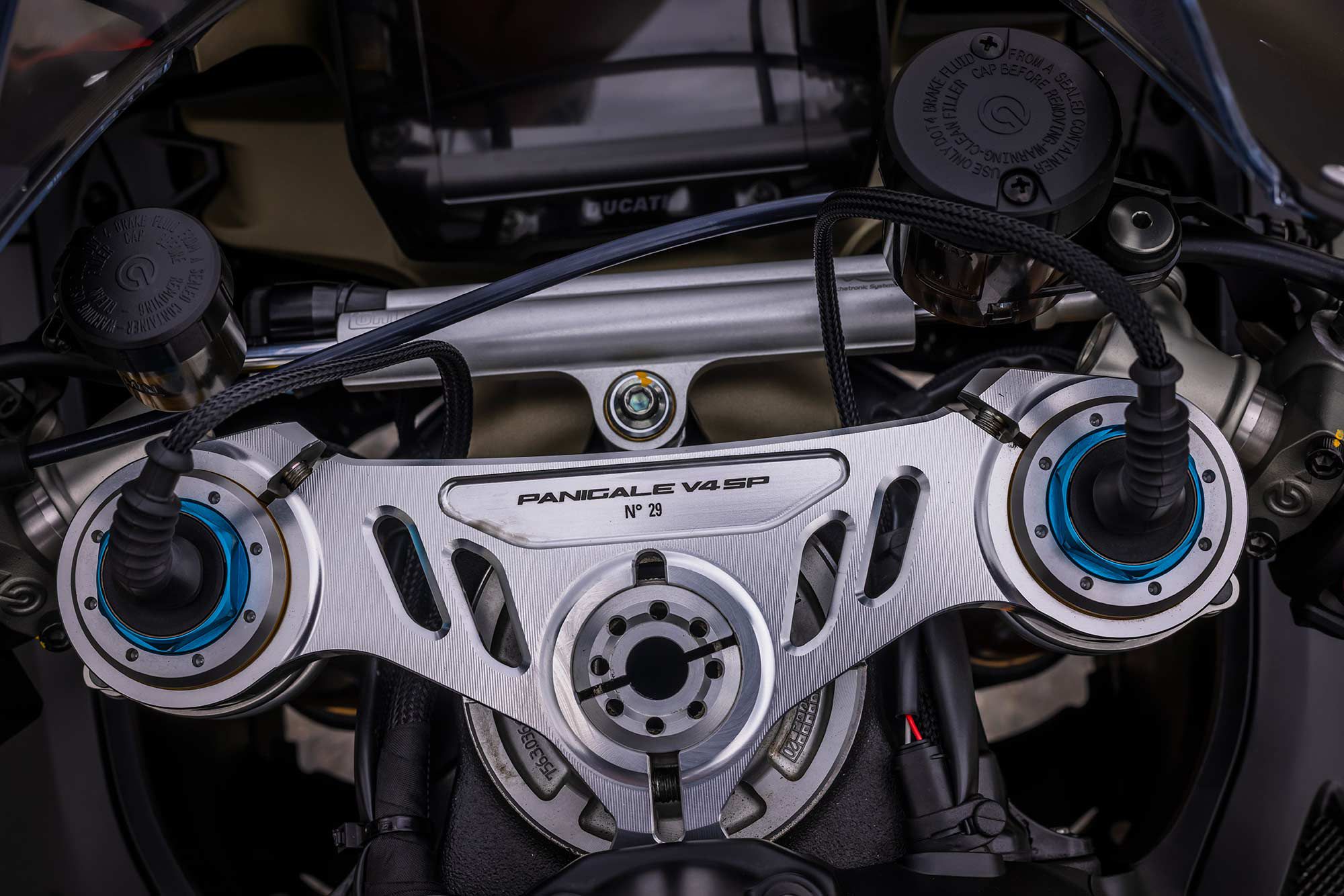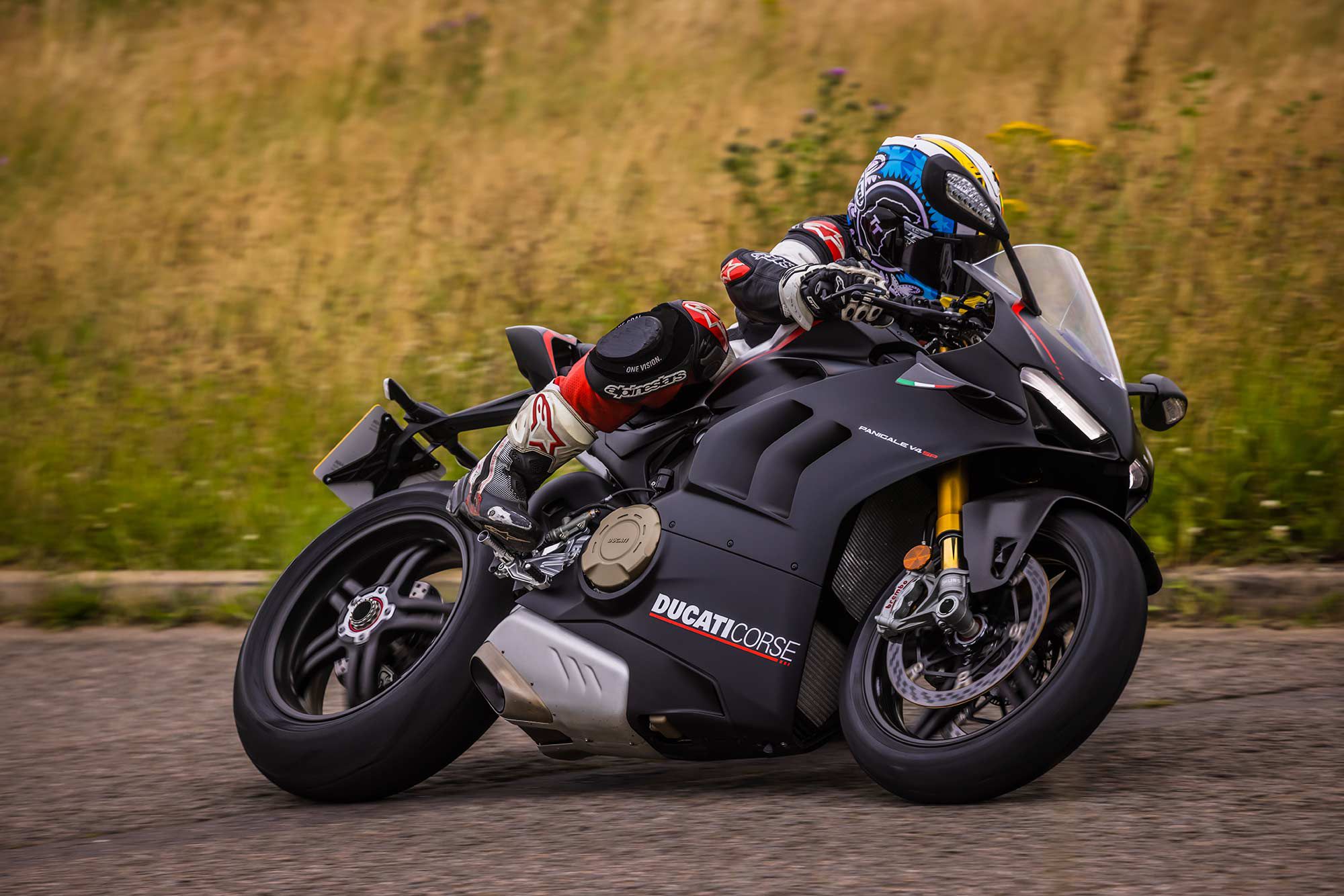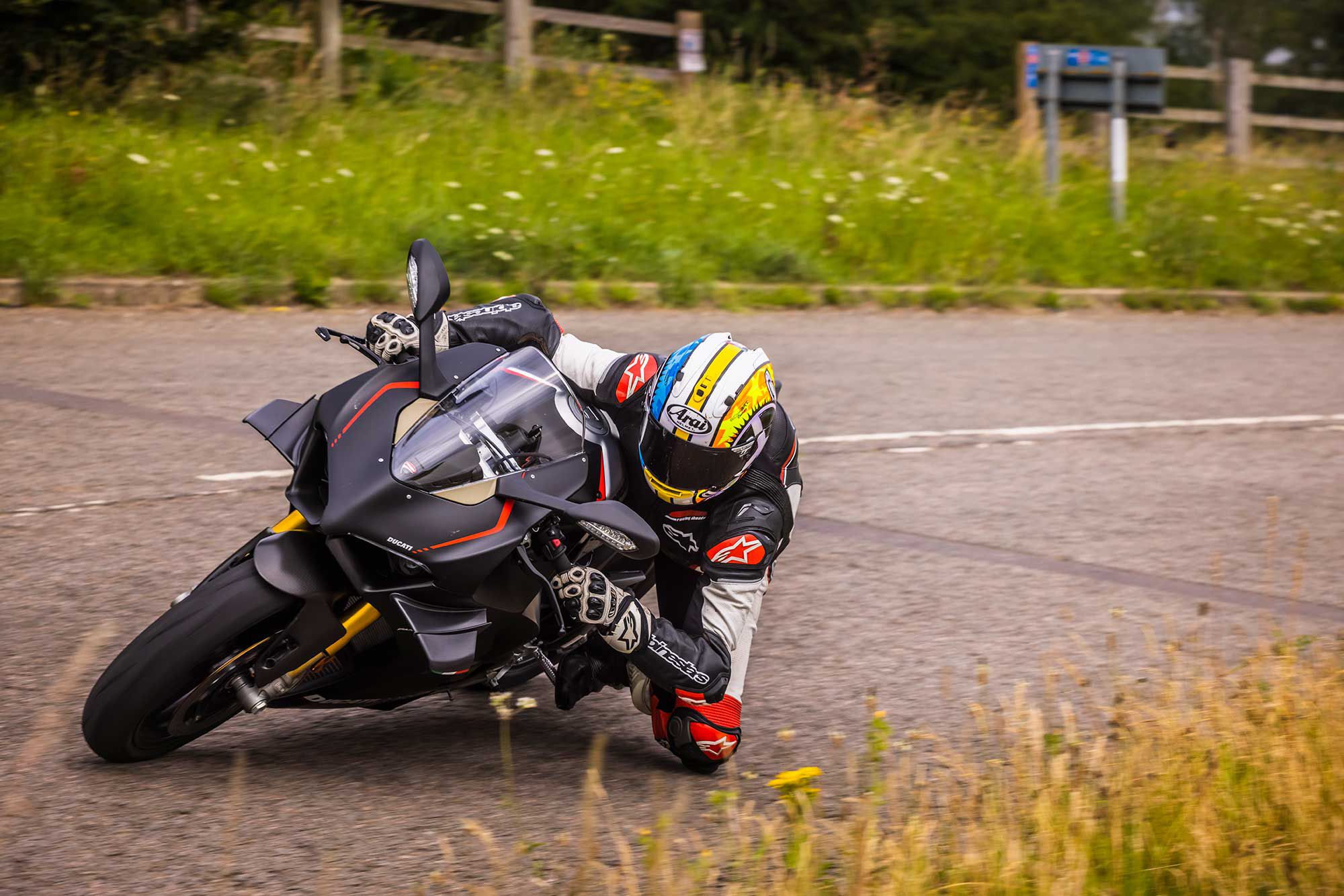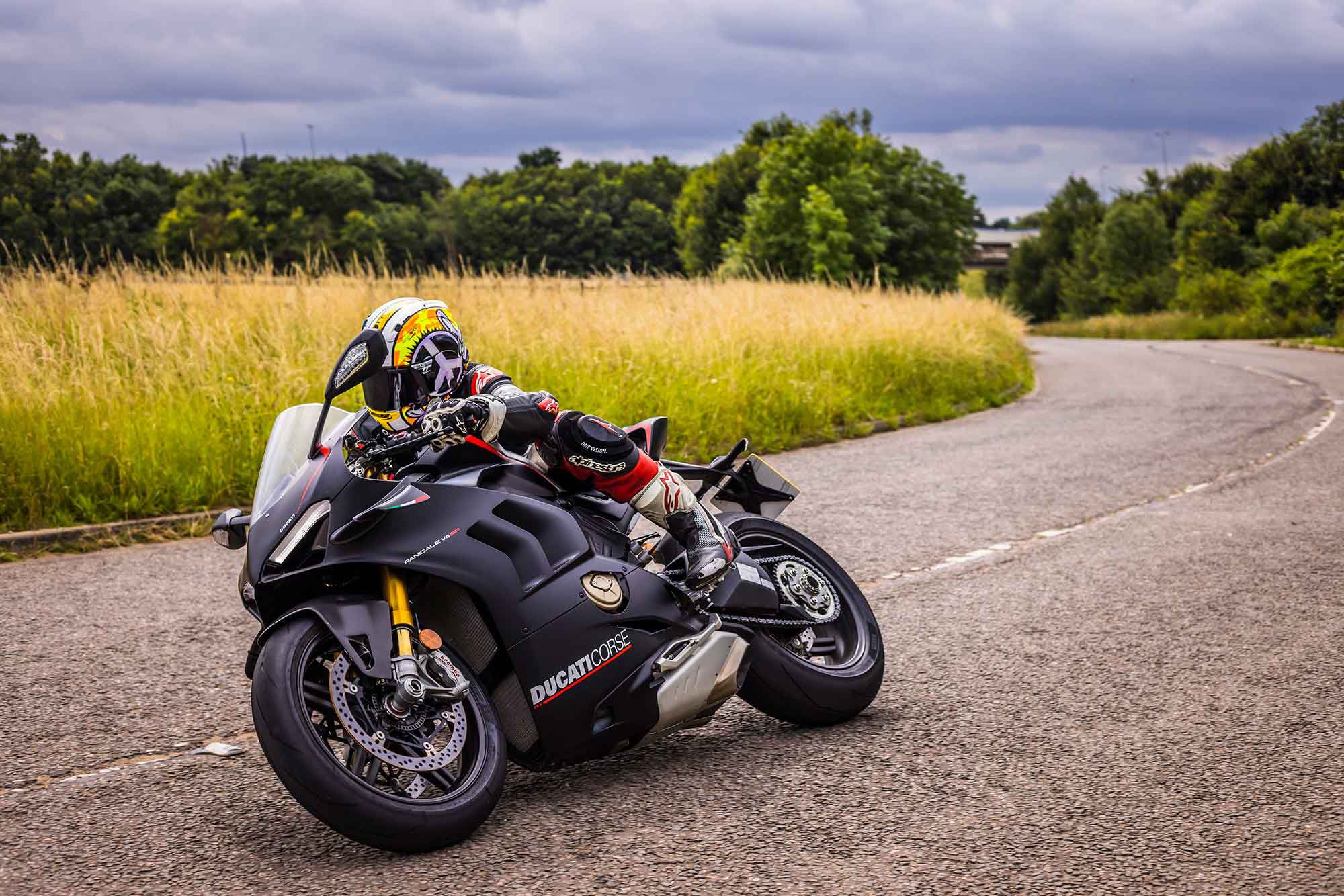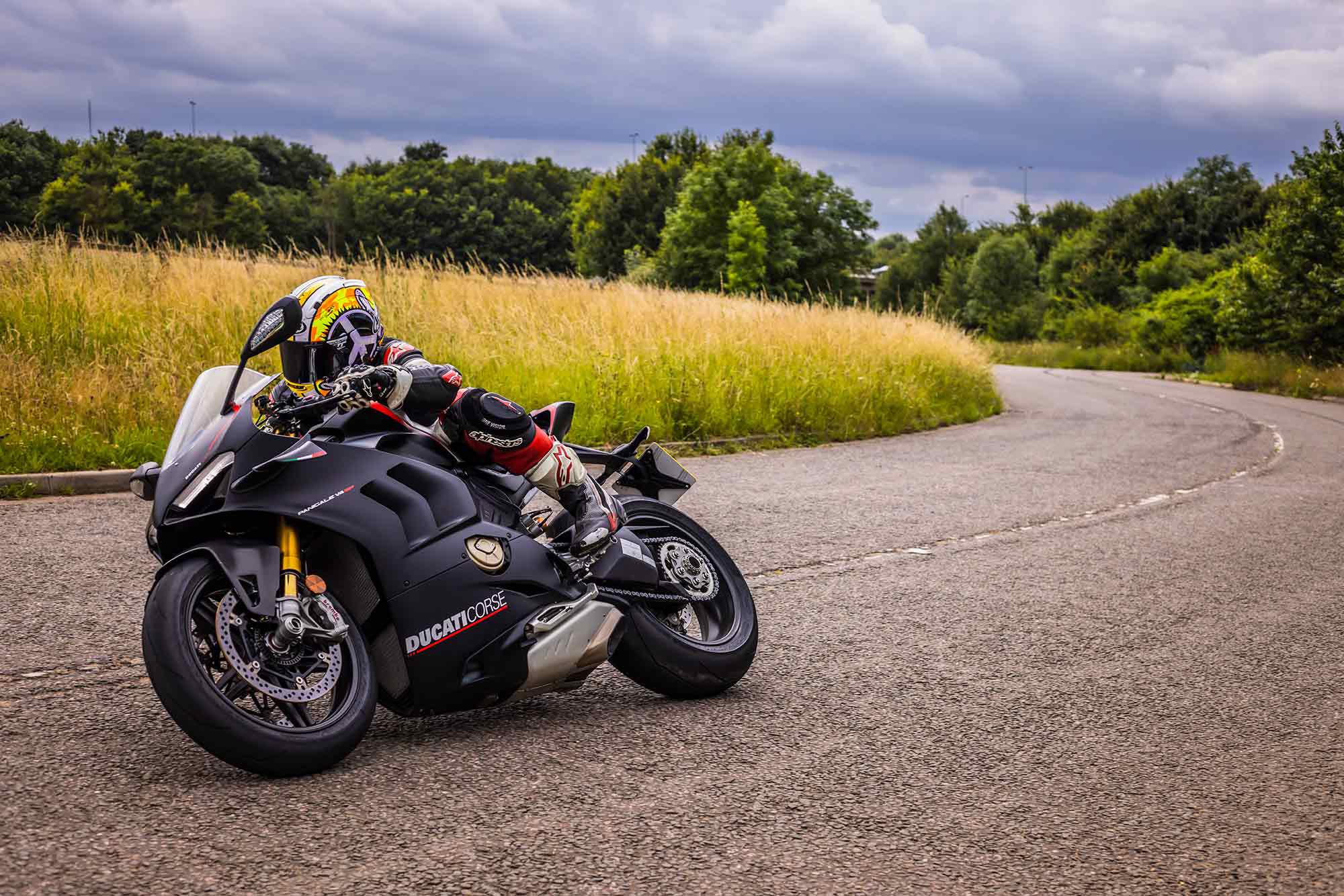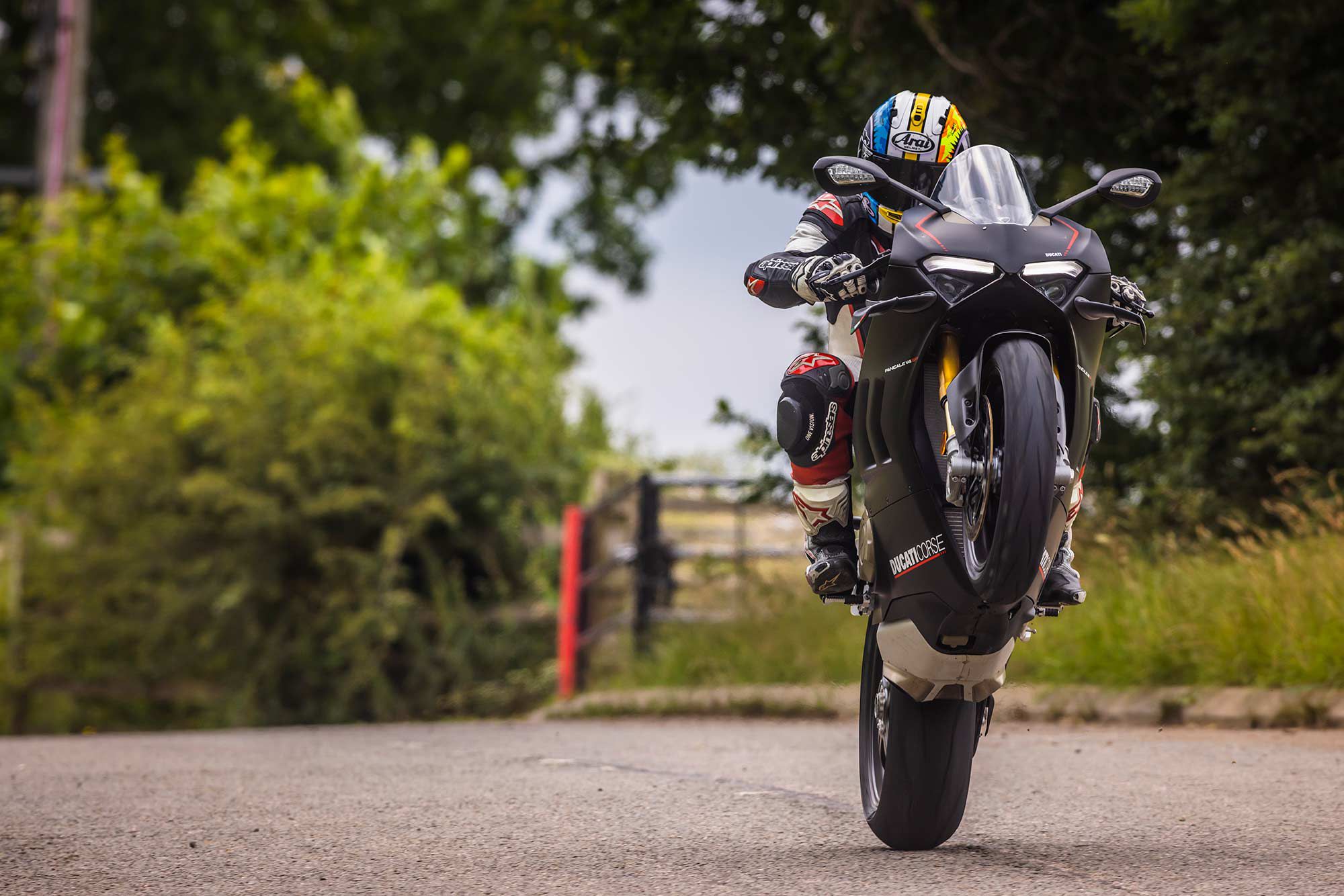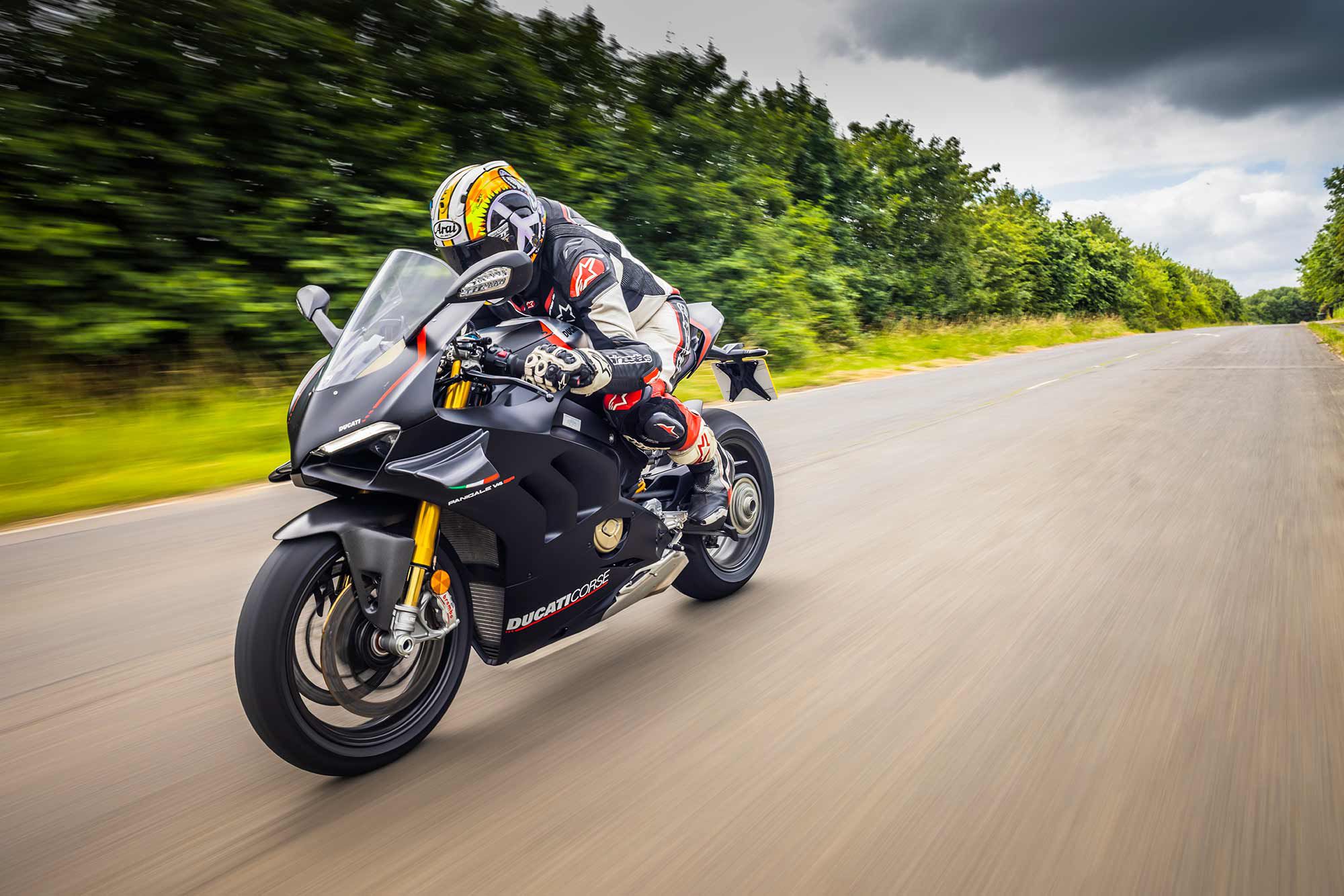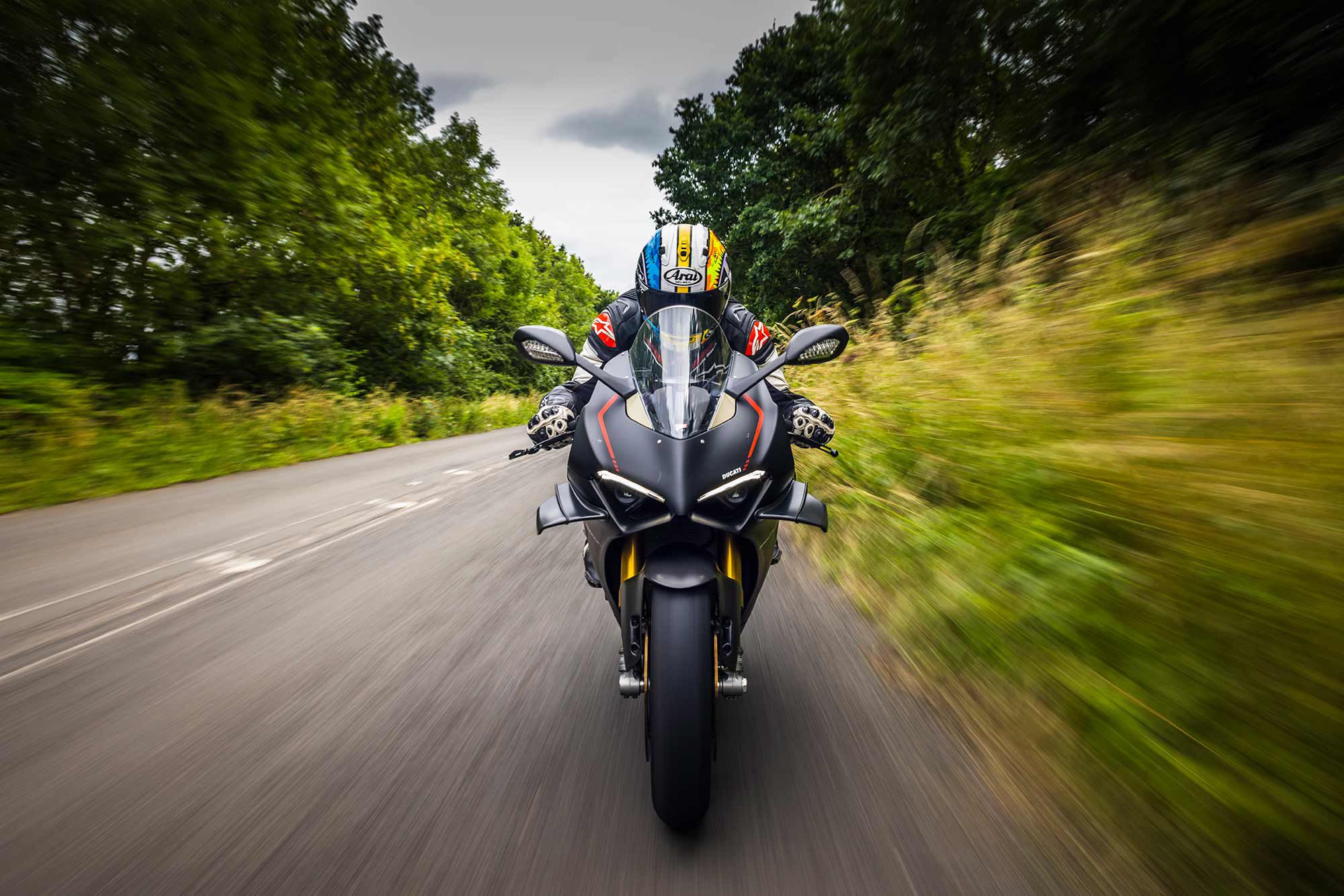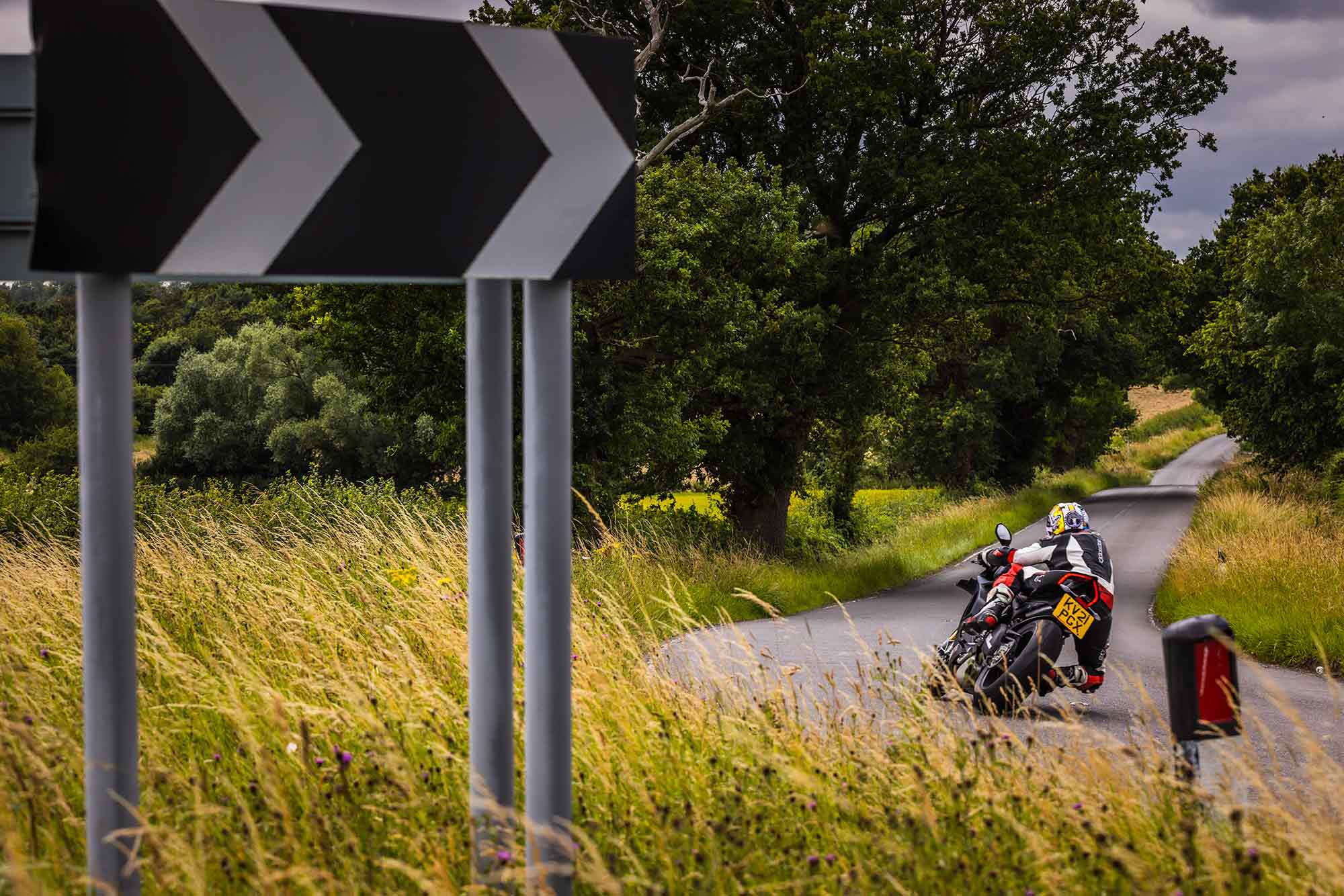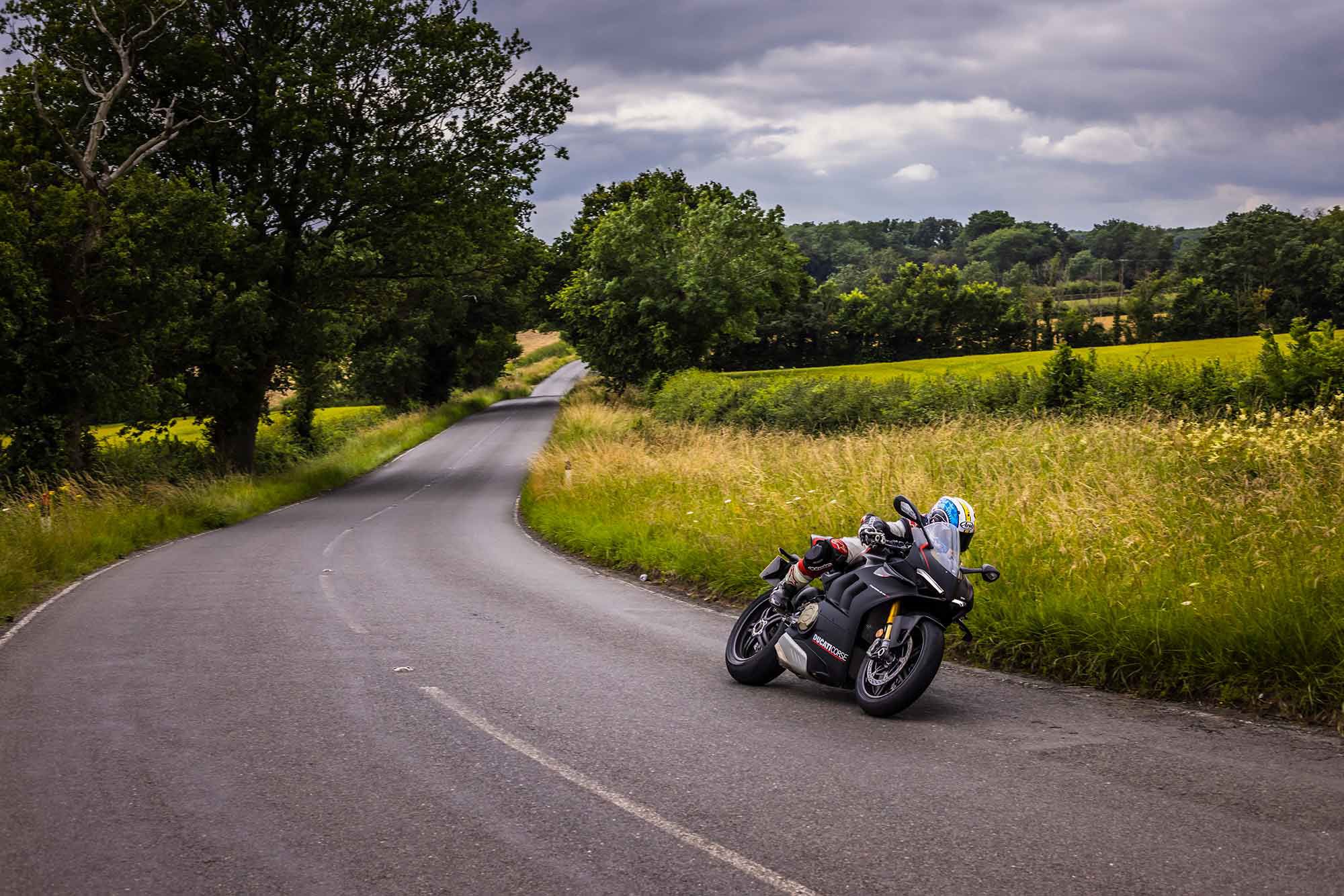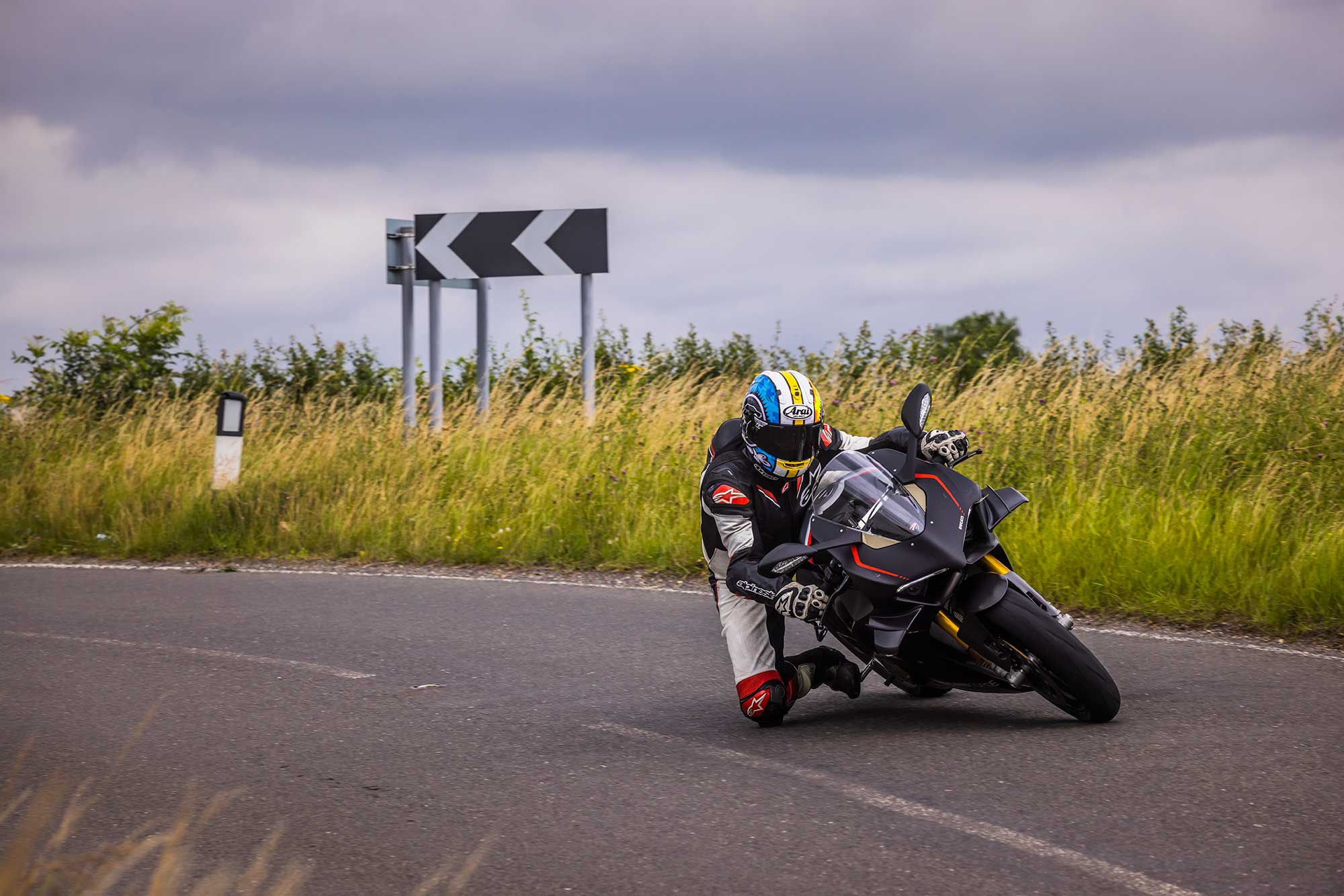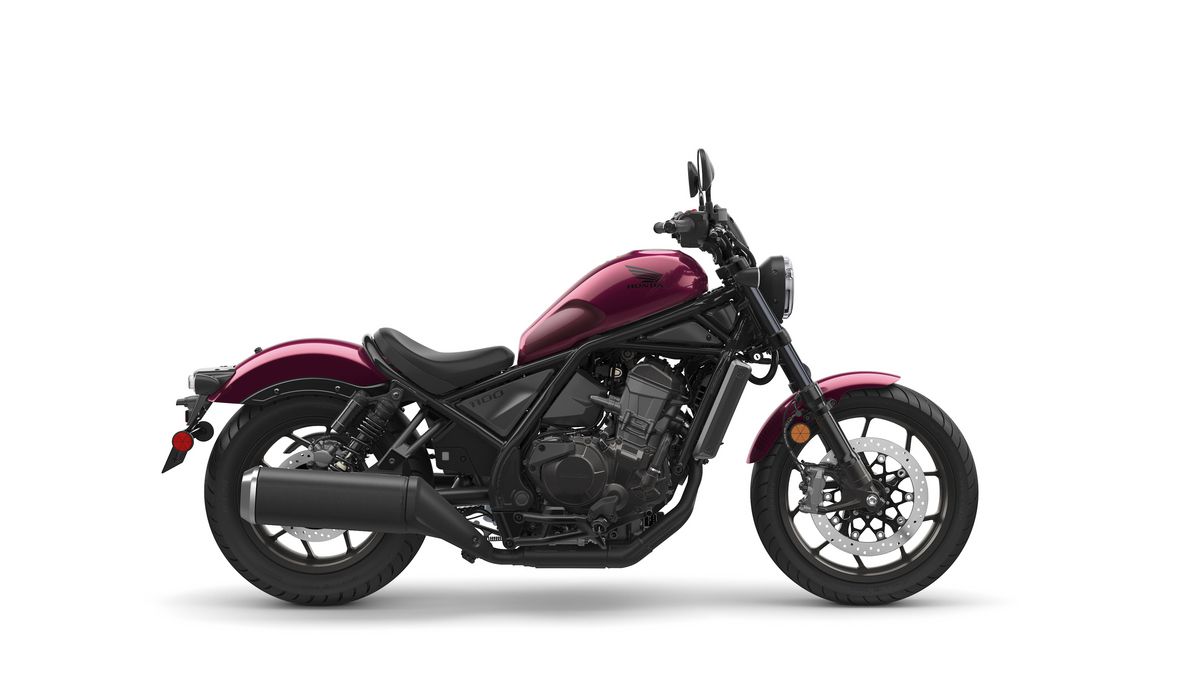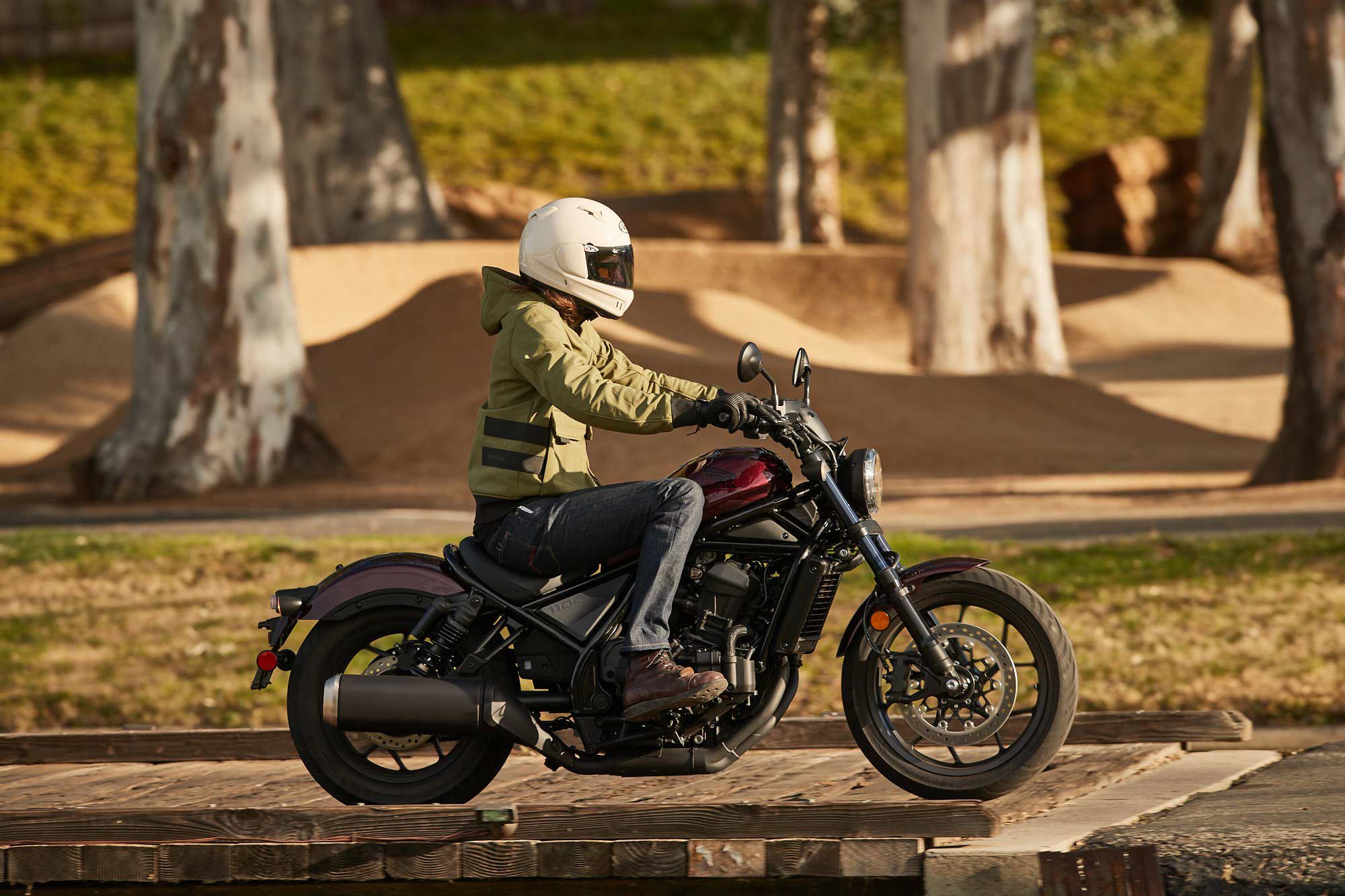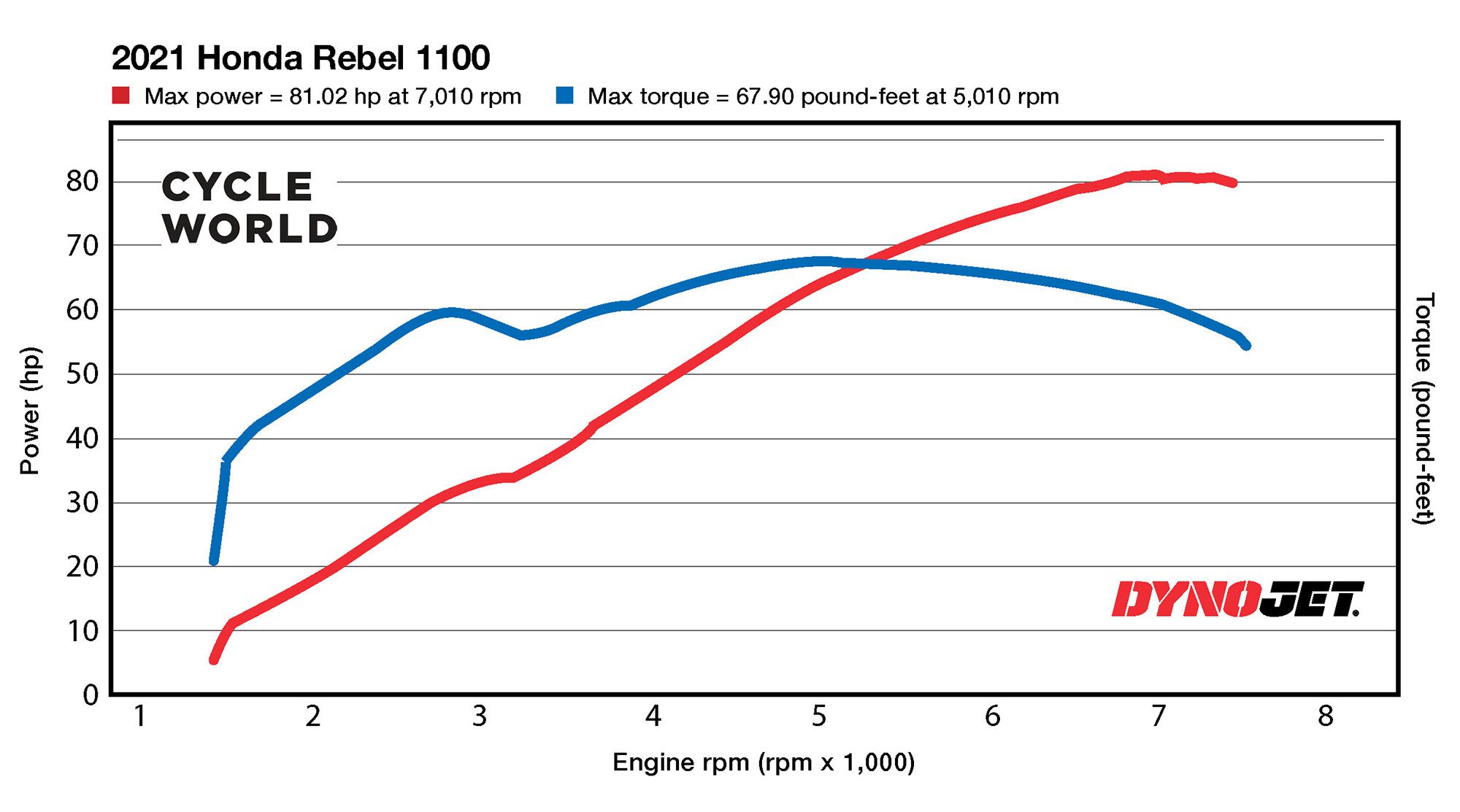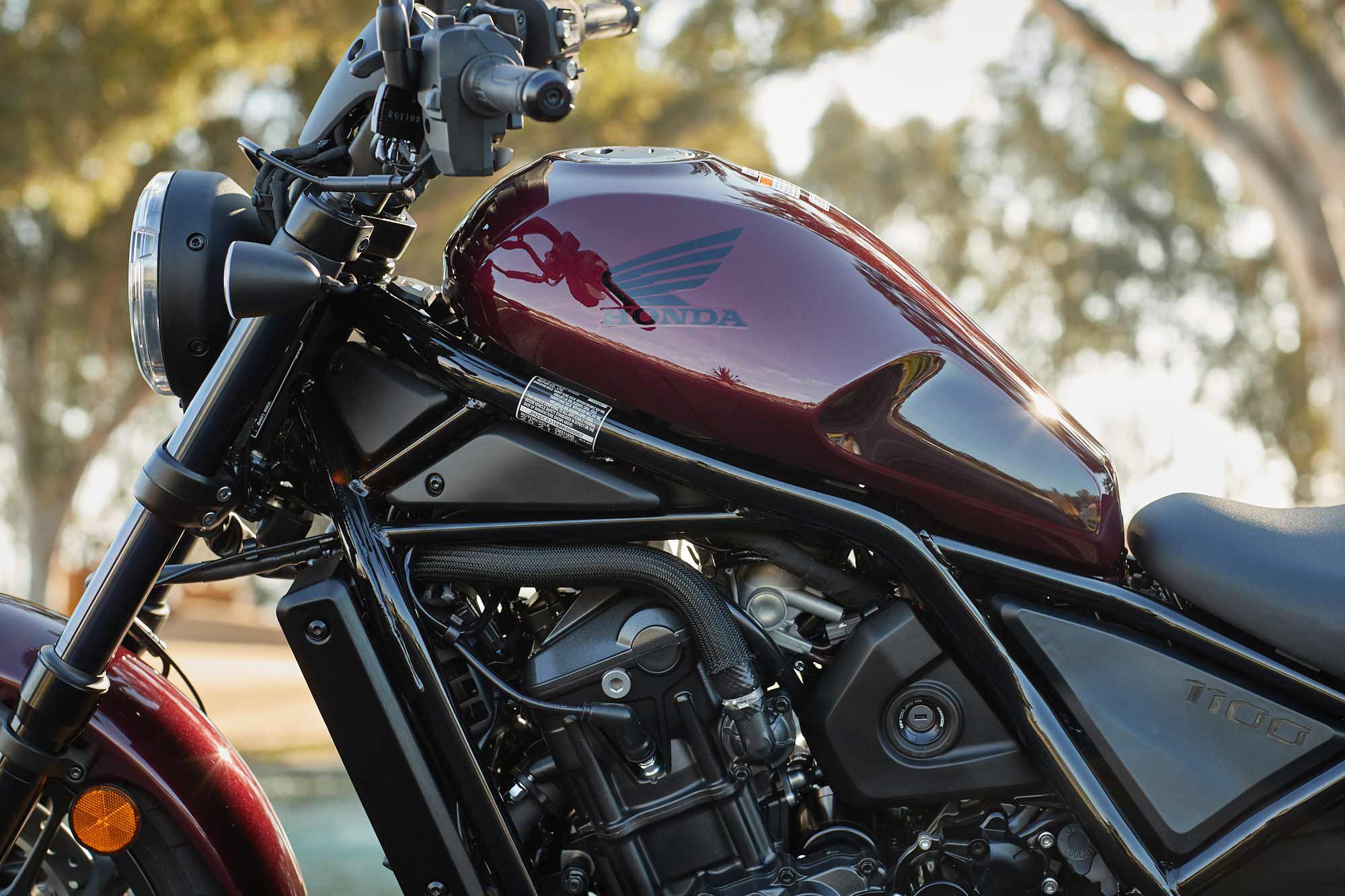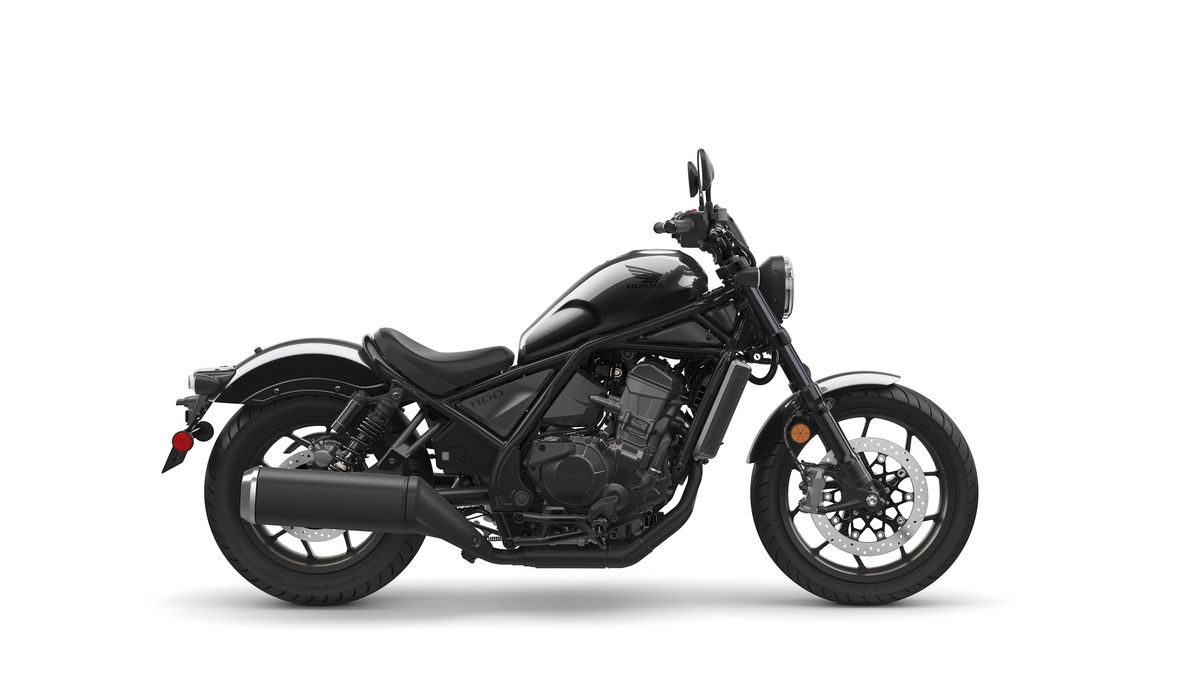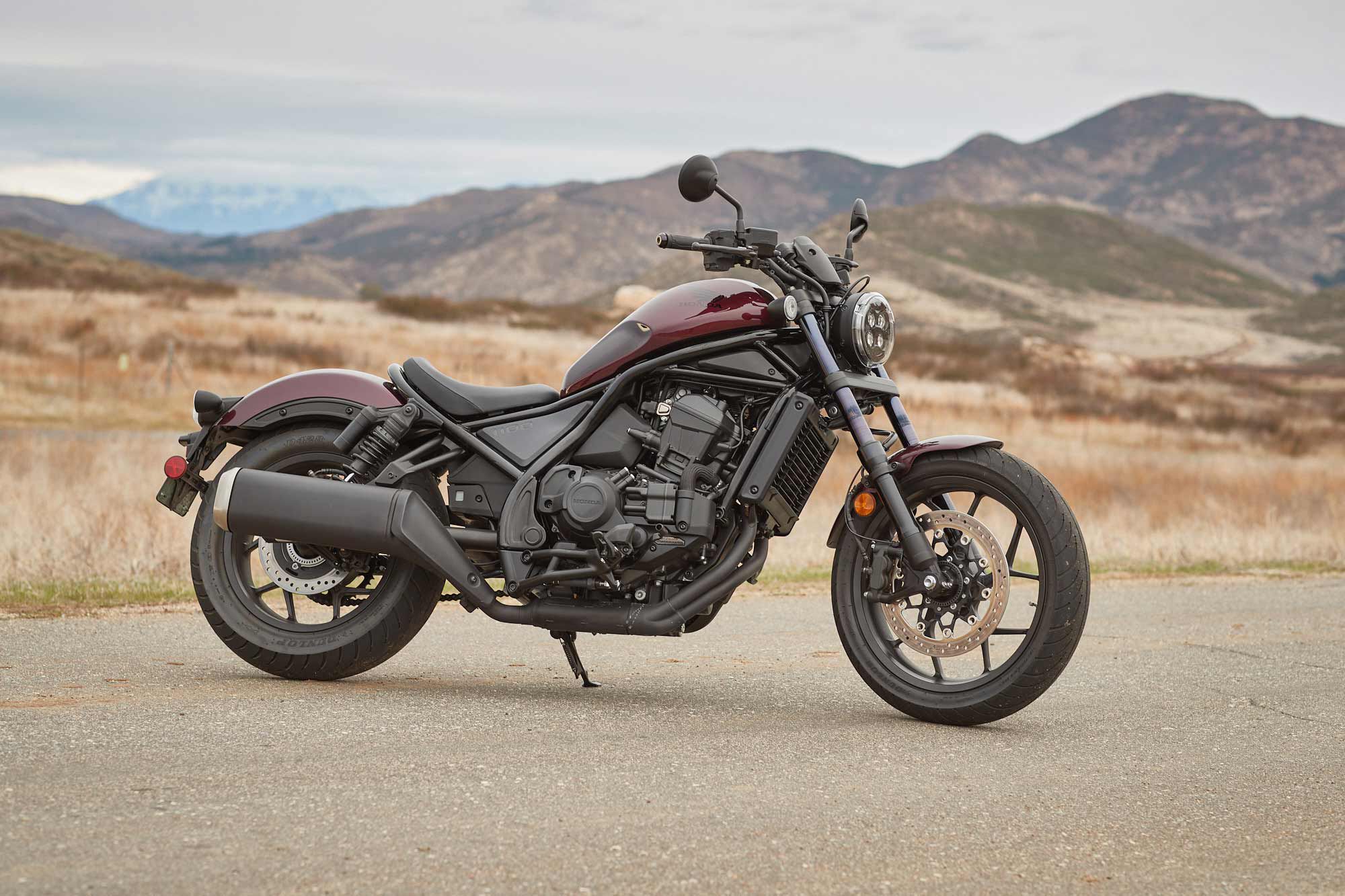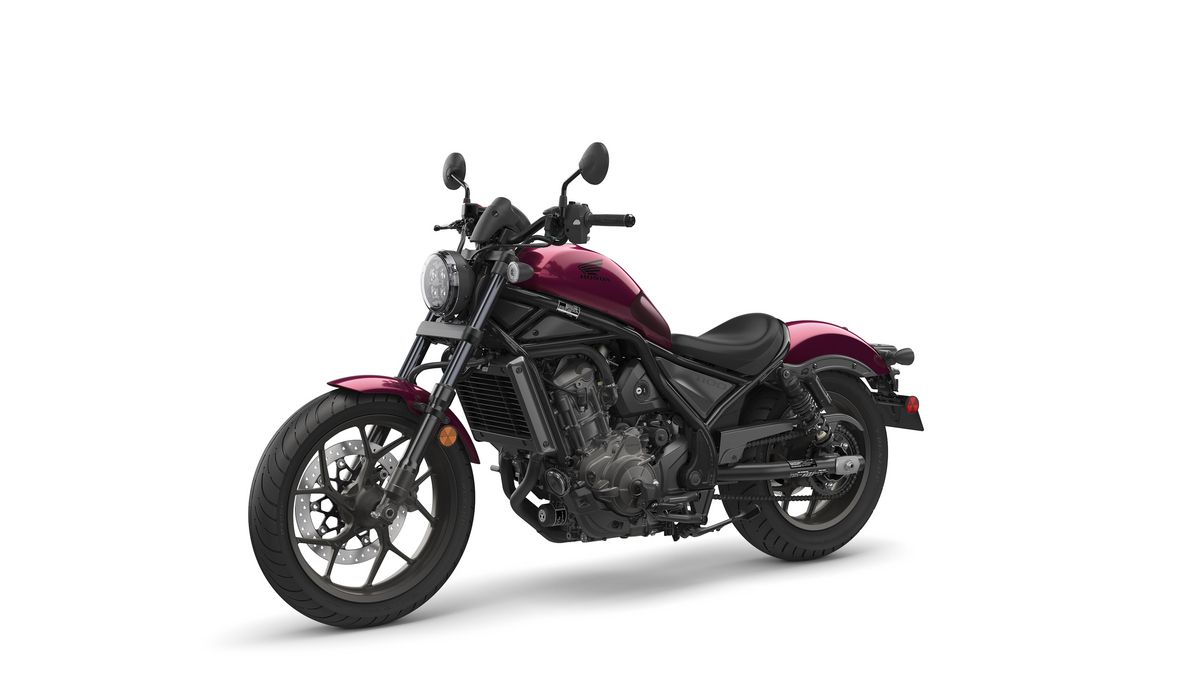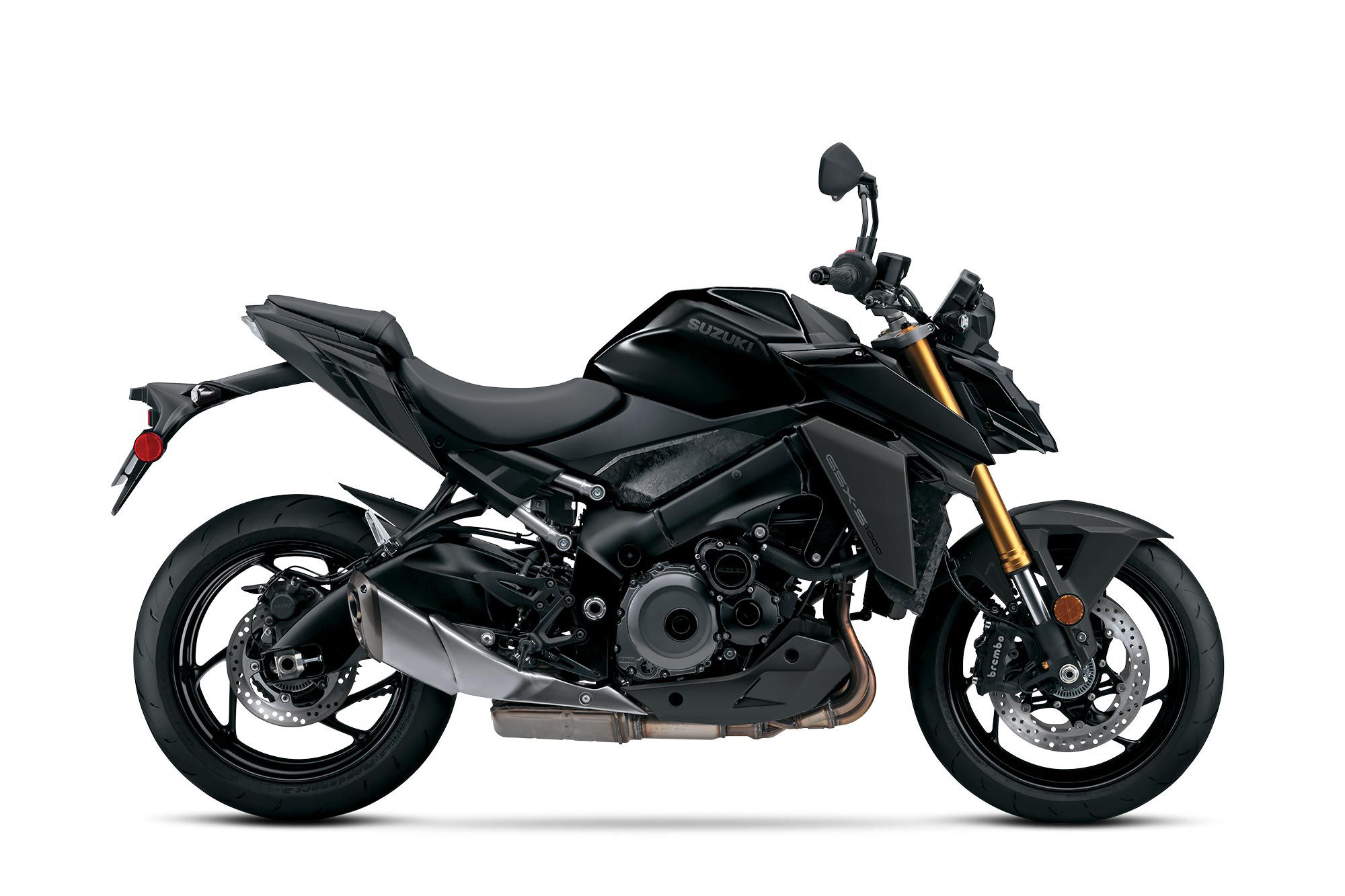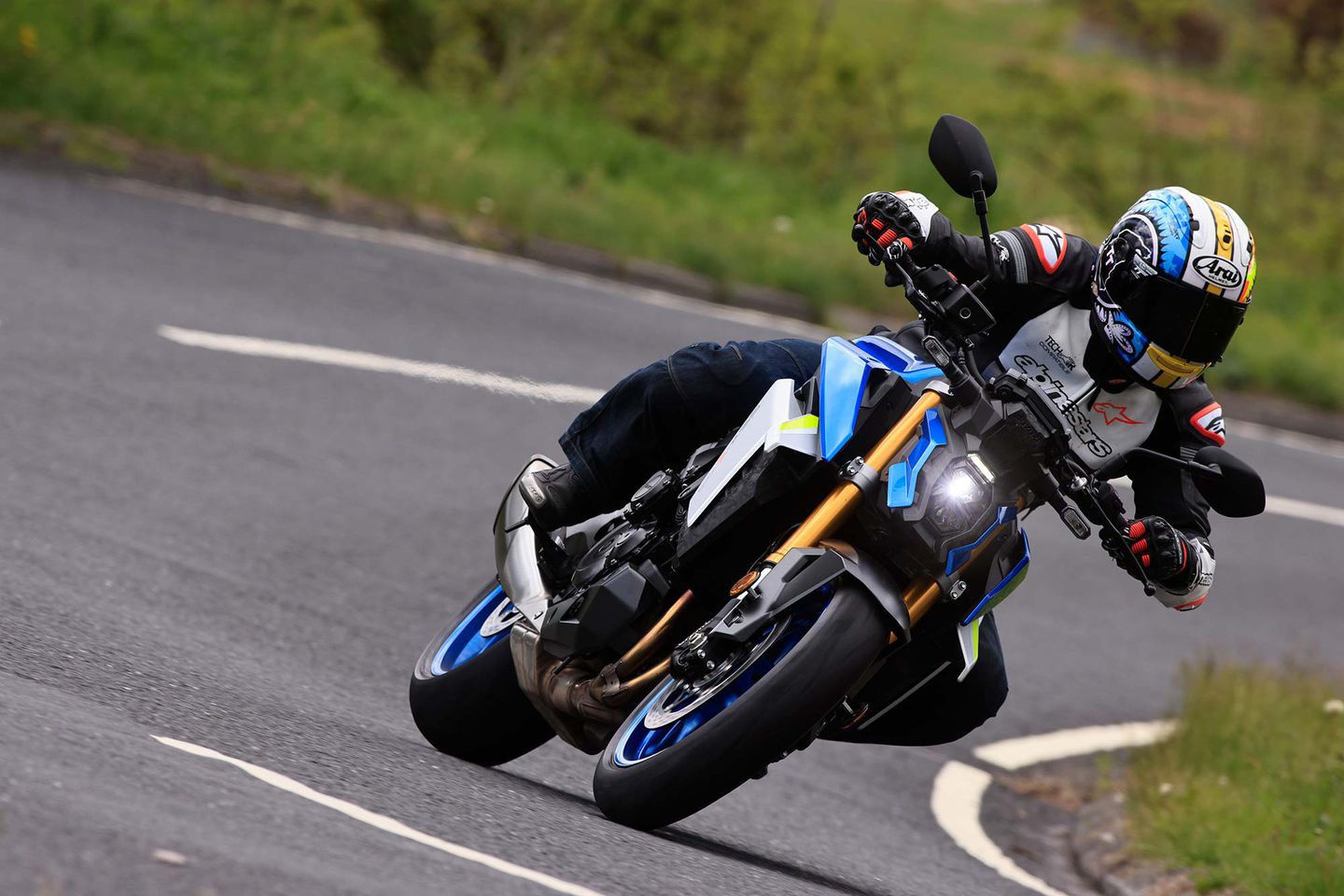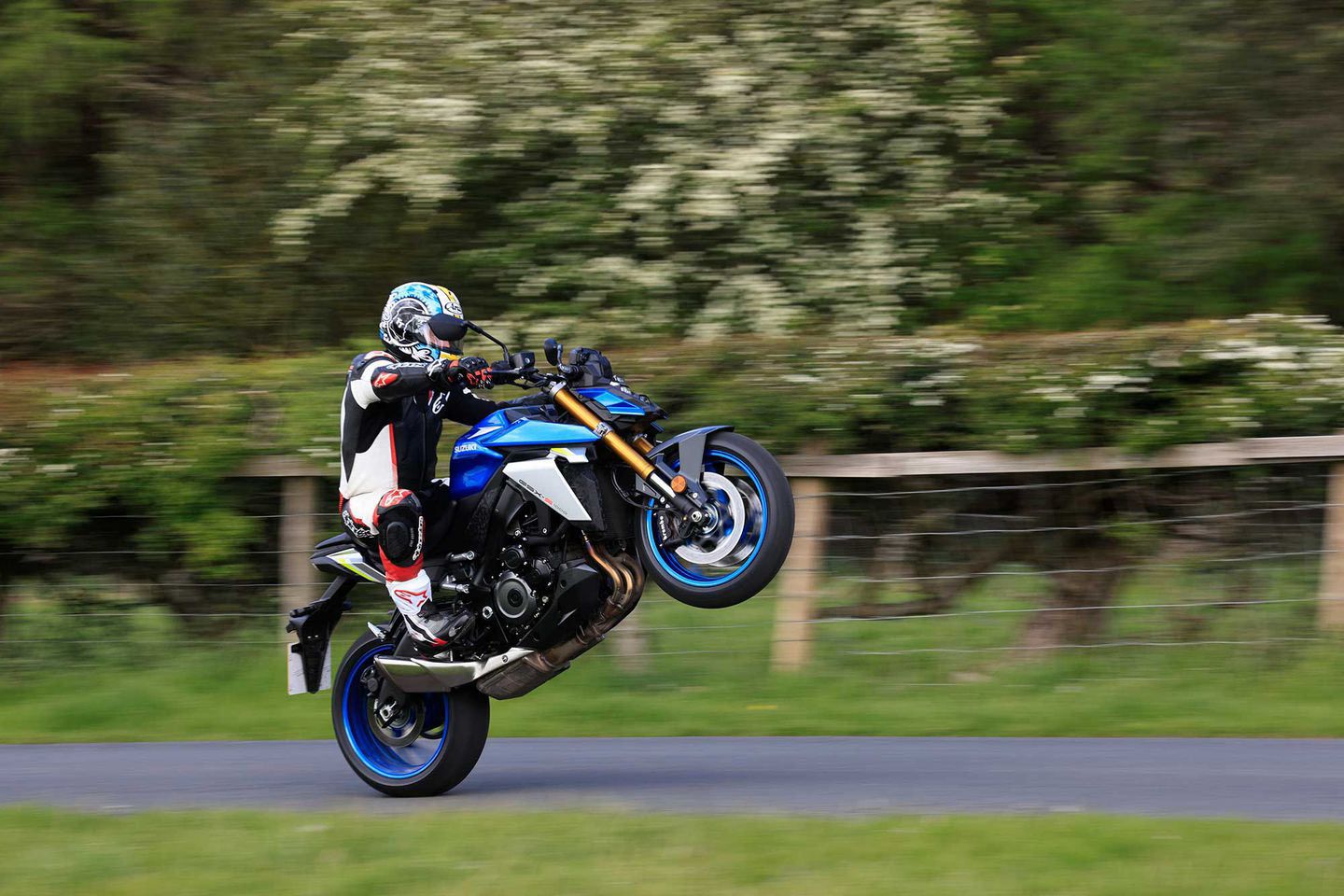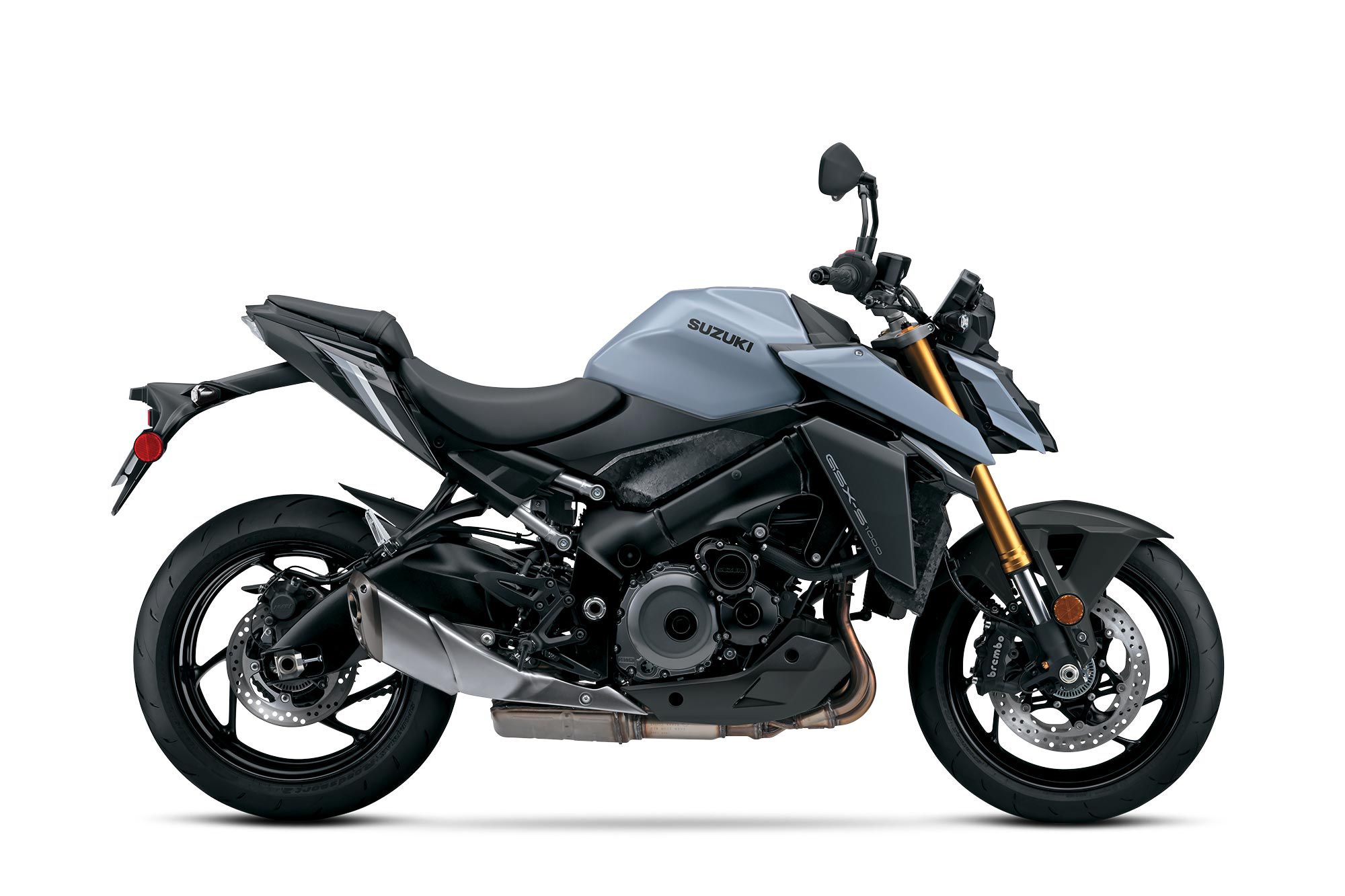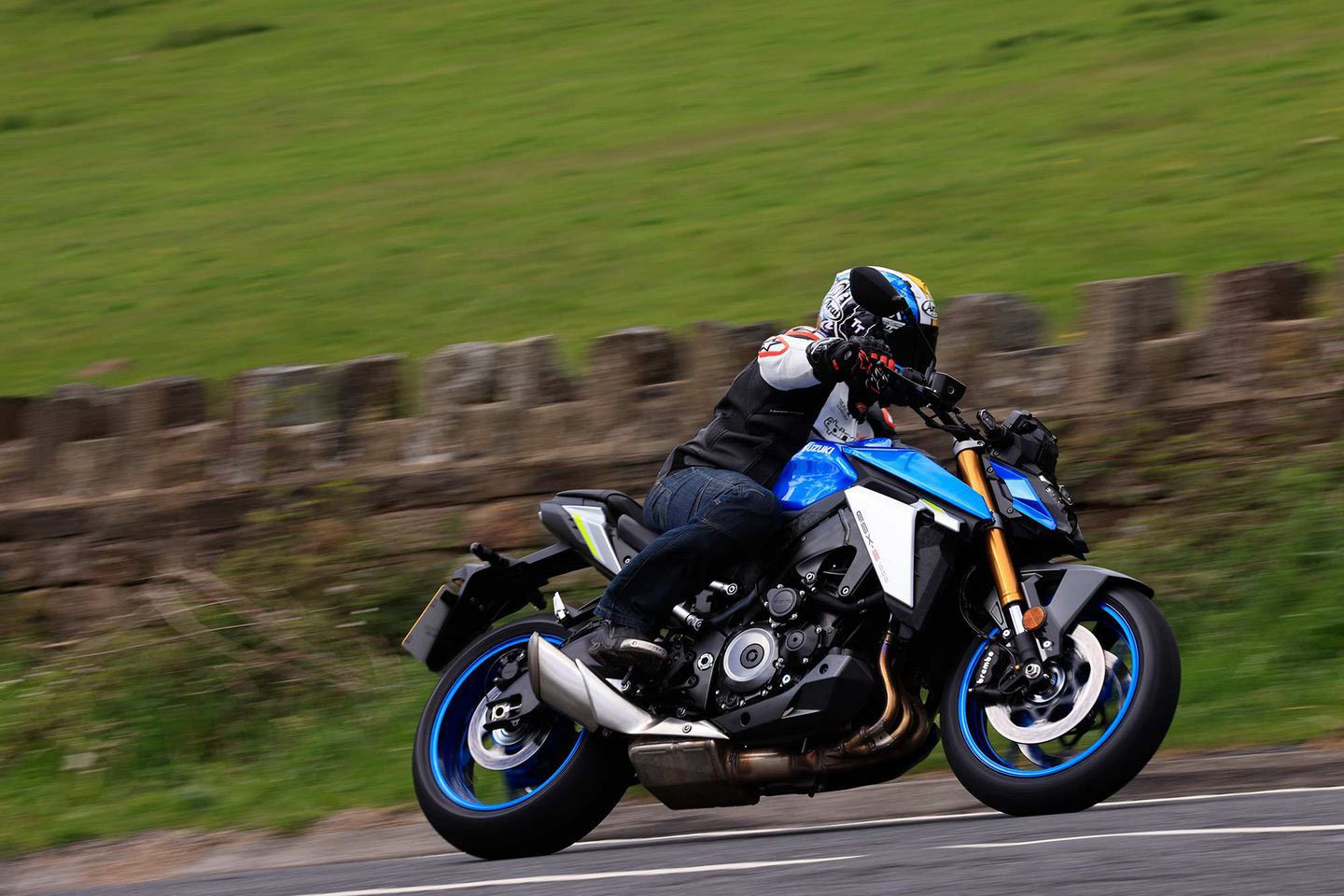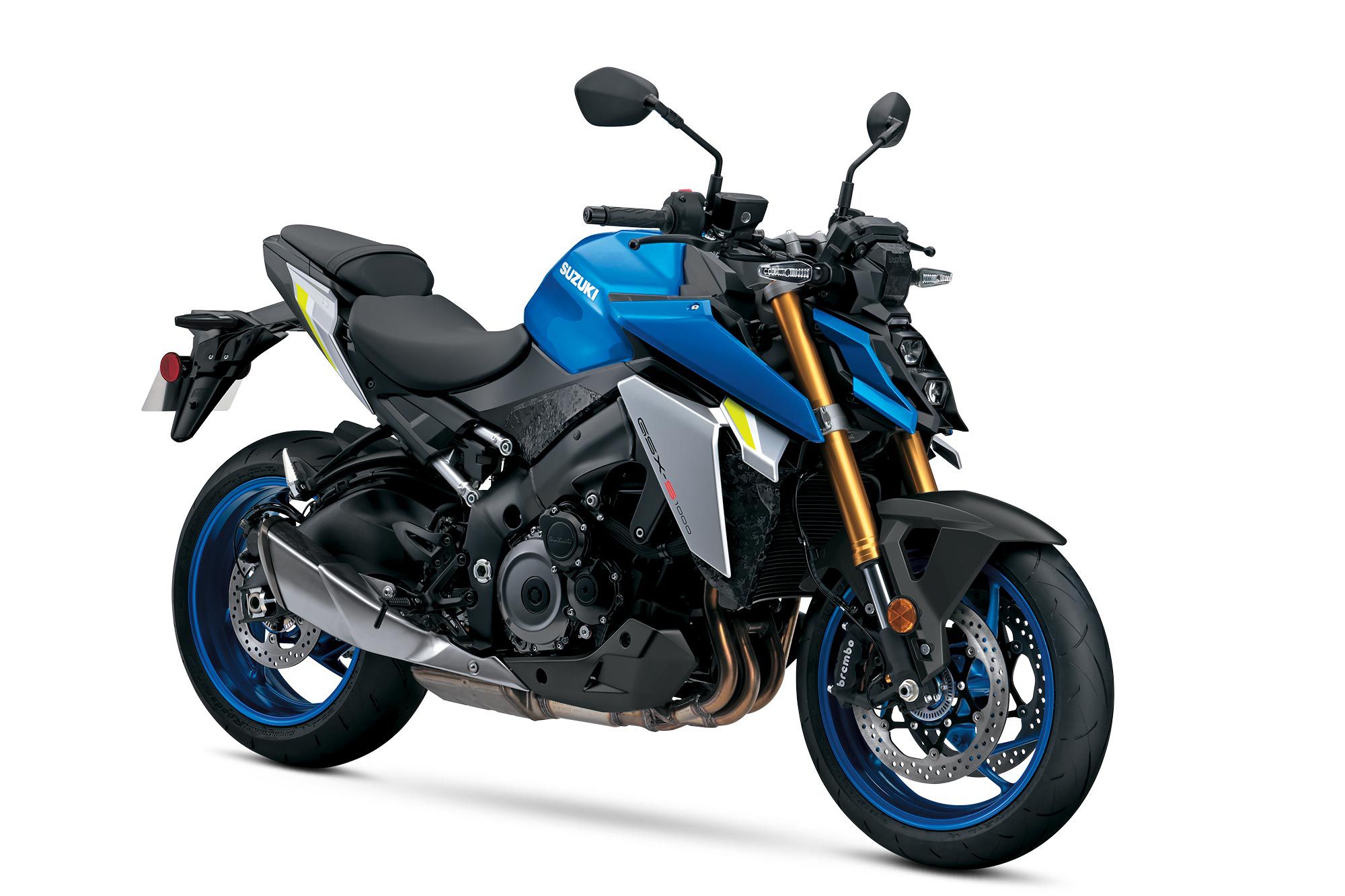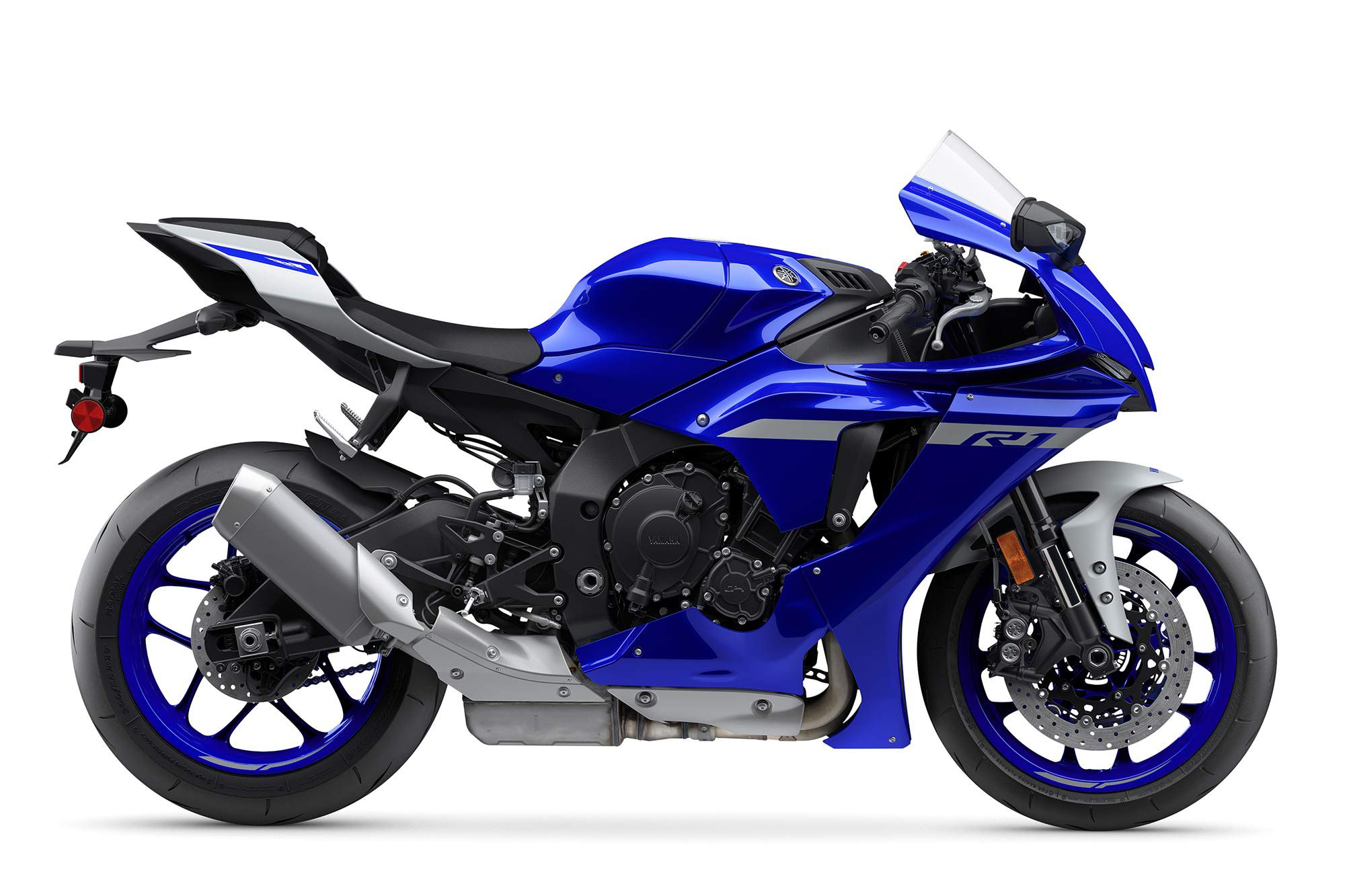
2021 Yamaha YZF-R1. (Yamaha/)
Ups
- Emotion-evoking sound and acceleration from the CP4 engine
- The M-model’s Ӧhlins suspension conquers ride feel
- A precise electronic rider aids package keeps the ride in check
- Minimum engine heat and vibration, even at highway speeds
Downs
- Yamaha’s Y-TRAC data logging smartphone app can be clunky
- The 5-inch TFT display is becoming outdated in comparison to competition
Verdict
You can’t think about modern-day production superbikes and not have the YZF-R1 come to mind. Its MotoGP-derived 998cc inline-four CP4 engine has adrenaline-pumping performance and is tricked out with loads of electronics.
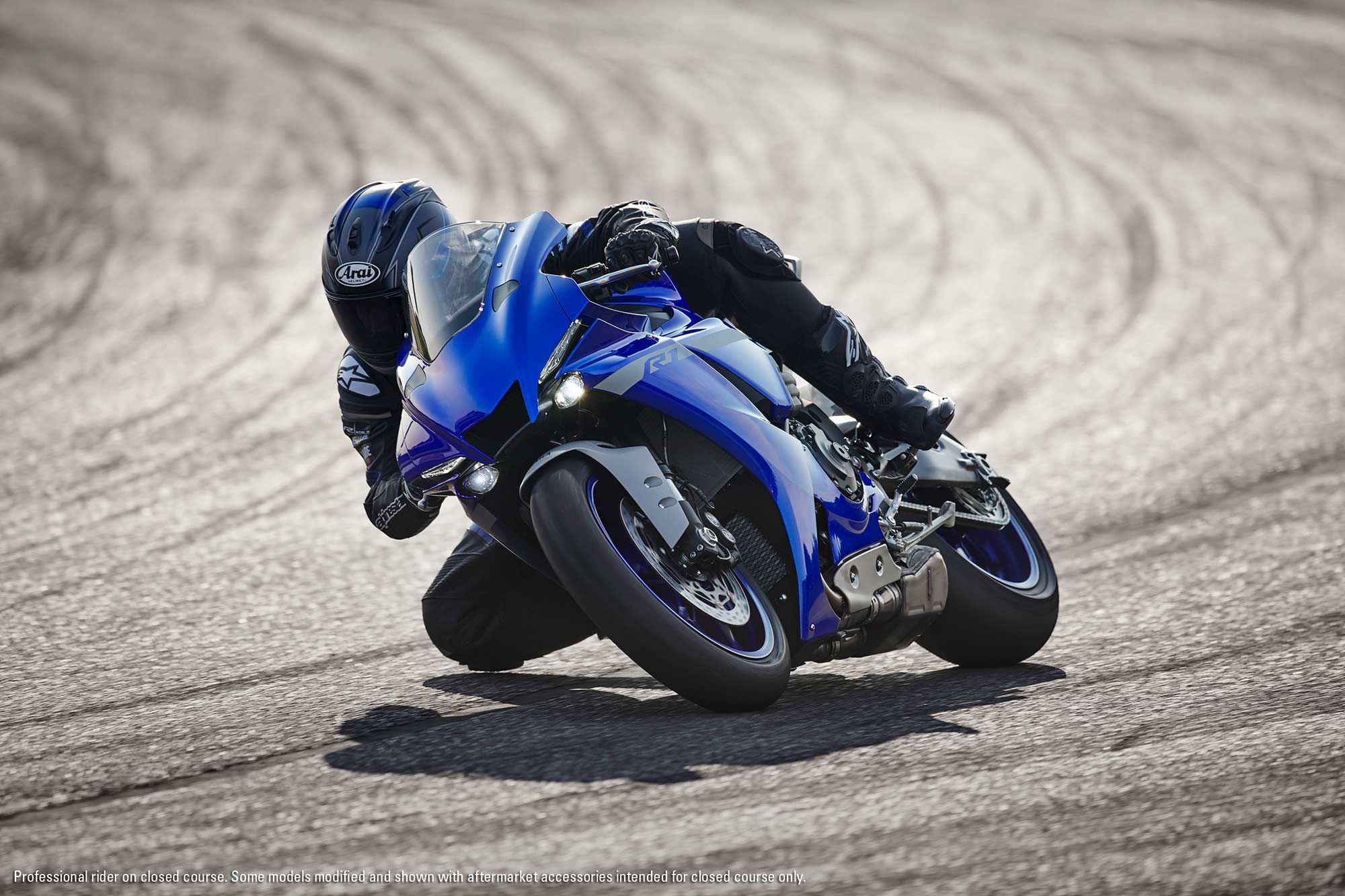
2021 Yamaha YZF-R1. (Yamaha/)
Overview
When it comes to most influential sportbikes, the Yamaha YZF-R1 is one of high standing. Its legendary CP4 inline-four engine has close ties with MotoGP and World Superbike that make it a standout competitor in performance and rideability. The R1 was introduced in 1998 and has been a popular choice for track or street riders looking to hit every apex.
Updates for 2021
There are no updates to the 2021 Yamaha YZF-R1 models.
Pricing and Variants
The 2021 Yamaha YZF-R1 has an MSRP of $17,399 whereas the up-spec YZF-R1M, comes in at $26,099. The M comes in carbon fiber bodywork, has Yamaha’s GPS datalogging system, and Ӧhlins semi-active suspension.
Competition
A competitive spirit rages in the YZF-R1, and it is also present in superbikes like the Aprilia RSV4, BMW S 1000 RR, Ducati Panigale V4, Suzuki GSX-R1000, Kawasaki ZX-10R, Ducati Panigale V4, and Honda CBR1000RR-R Fireblade.
Powertrain: Engine, Transmission, and Performance
Beneath the YZF-R1′s bodywork is the legendary 998cc inline-four CP4 engine with its MotoGP-driven crossplane crankshaft technology and wicked-sound uneven firing order (270 degrees, 180 degrees, 90 degrees, 180 degrees). It was last updated for the 2020 model year to meet Euro 5 emissions standards, while maintaining power output. It also received a new cableless ride-by-wire throttle system called Accelerator Position Sensor with Grip (APSG).
In our first ride review of the 2020 model, we reported that it “retains the same emotion-stirring power delivery and inspiring crossplane pitch that made the outgoing model so entertaining. Even more impressive: The new cableless throttle eliminates the overly sensitive initial throttle response of the outgoing model, most significantly in the most-aggressive Power Mode A.”
Since then, Motorcyclist’s Adam Waheed completed street testing aboard the up-spec 2021 YZF-R1M, noting its minimal engine vibration and unique sound. “Even better is the engine’s sound, delivering a unique guttural roar that sounds like no other motorcycle made…aside from Valentino Rossi’s YZR-M1 MotoGP prototype,” Waheed wrote. “An electric up-and-down quickshifter makes for immediate gear exchanges between each of the six transmission cogs.”
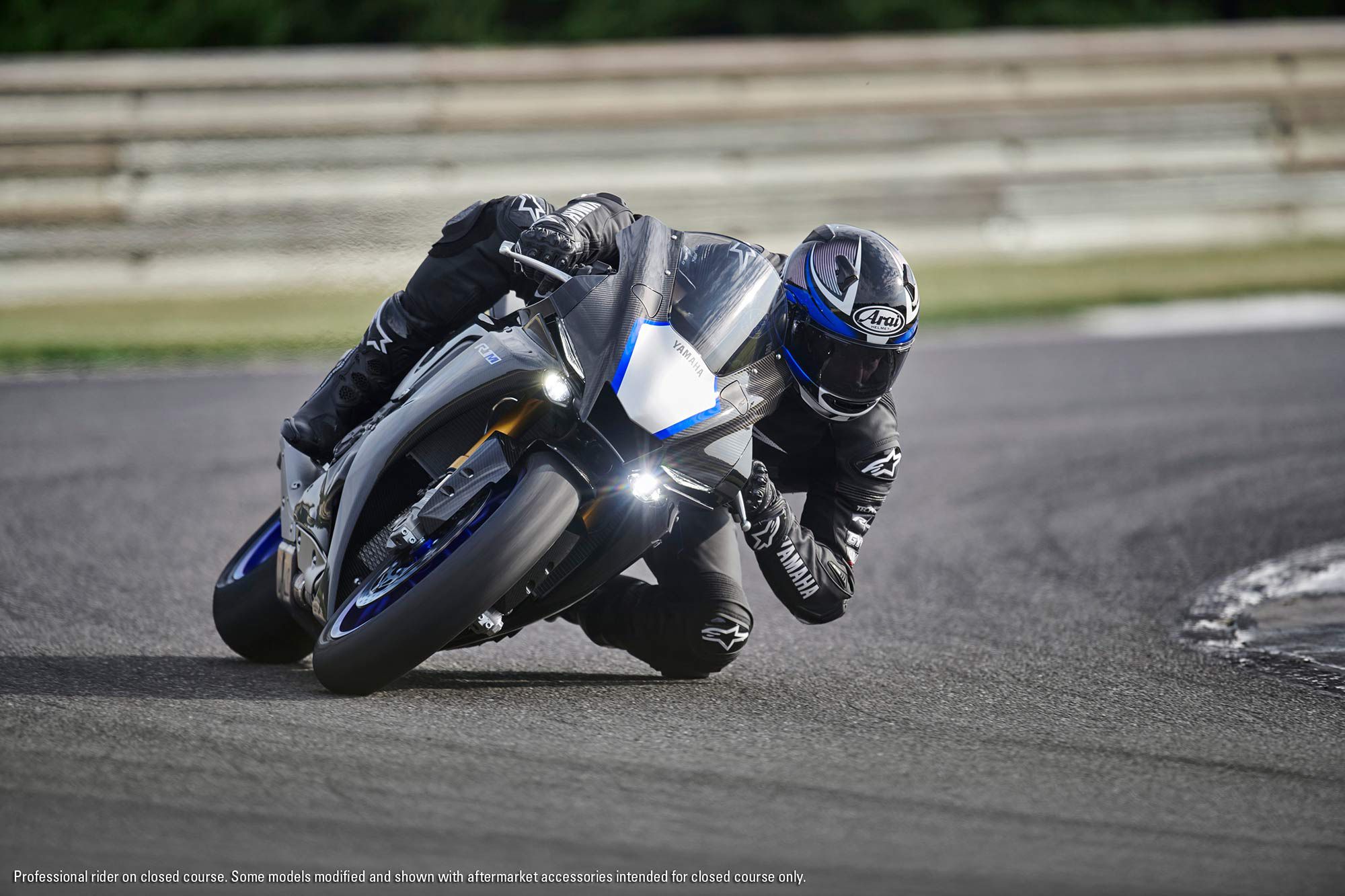
2021 Yamaha YZF-R1M. (Yamaha/)
Handling
Both the Yamaha YZF-R1 and YZF-R1M are sweet handling superbikes with confidence-inspiring characteristics. Stellar feedback and feel have always been standout traits of the Yamaha, and even more so with the updated internal valving and spring rates of the base-model’s KYB suspension in 2020. “The result is a confidence-inspiring feedback in all areas of the racetrack without sacrificing stability under heavy braking loads,” Cycle World Road Test Editor Michael Gilbert reported. “Every lap came with the realization that I could push deeper still into corners.”
The YZF-R1M is outfitted with a top-shelf, gas-charged Ӧhlins NPX fork and shock with Electronic Racing Suspension (ERS) semi-active function. Since its inception on the 2015 model year YZF-R1, lap-to-lap consistency in damping characteristics has improved dramatically, though for sole track riding focus, switching to a manual (or frozen) damping setting is preferred.
Brakes
Both variations of the R1 are stopped by a pair of Advics four-piston calipers clamping to 320mm discs up front and a single-piston caliper grabbing a 220mm out back. Yamaha’s IMU-operated Brake Control System (the bLU cRU’s terminology for ABS) works to quickly and efficiently slow the motorcycle in varying grip conditions.
Secondary to the brakes themselves, Yamaha incorporated a three-level Engine Brake Management (EBM) system in 2020, which allows the ability to tailor off-throttle deceleration characteristics from the engine. It has been a welcomed touch, especially when you’re looking for every ounce of confidence at the racetrack.
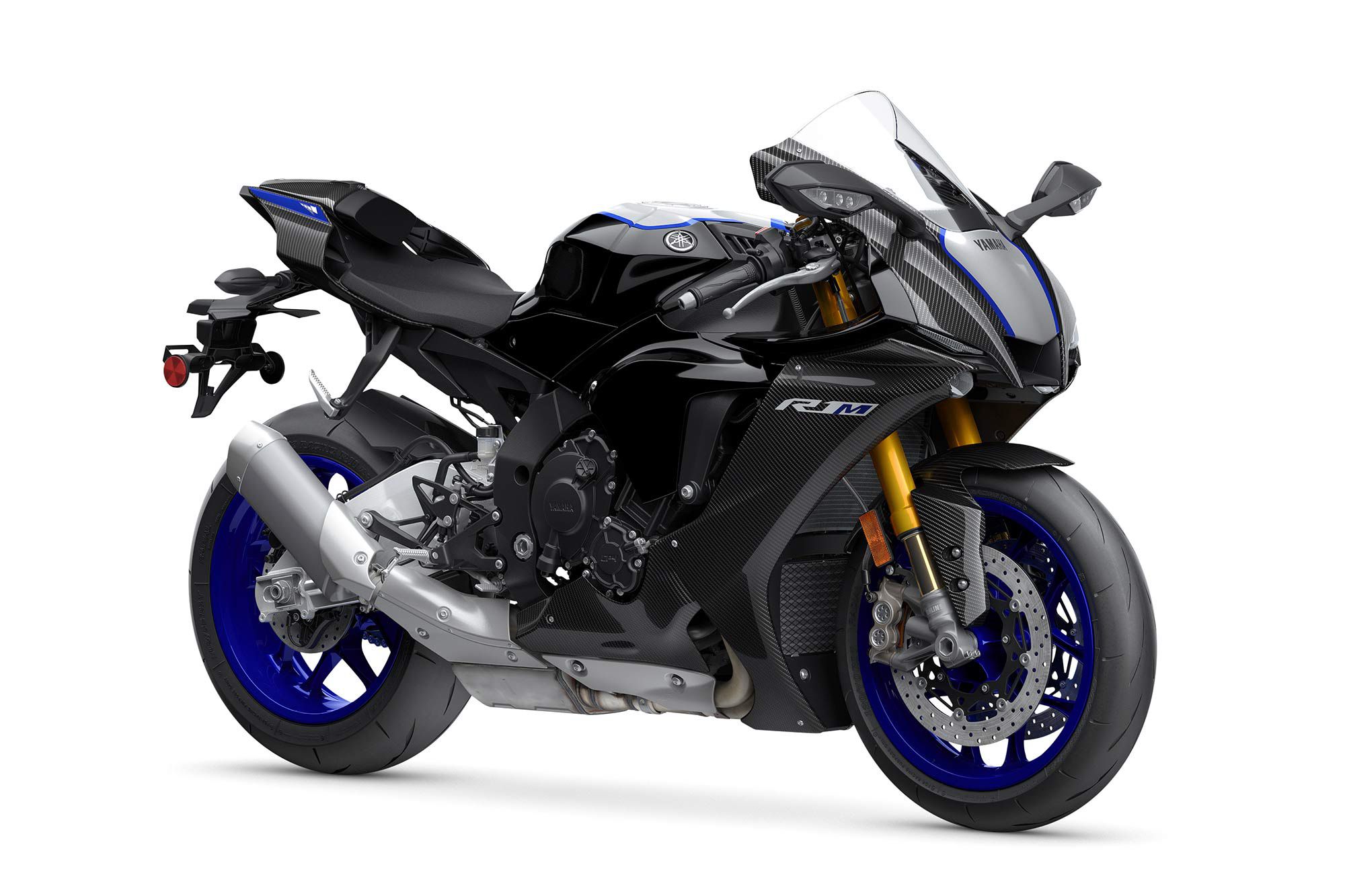
2021 Yamaha YZF-R1M. (Yamaha/)
Fuel Economy and Real-World MPG
The YZF-R1 has a claimed 33 mpg and a 4.5-gallon fuel tank.
Ergonomics: Comfort and Utility
An aggressive, relatively low clip-on handlebar position and attack-position nonadjustable rearsets signal the YZF-R1′s sporting intent. Sure, the setup is racy, but not the most aggressive out there, according to Waheed’s MC Commute. The windscreen is also relatively tall, offering an easy aerodynamic tuck on the straightaways.
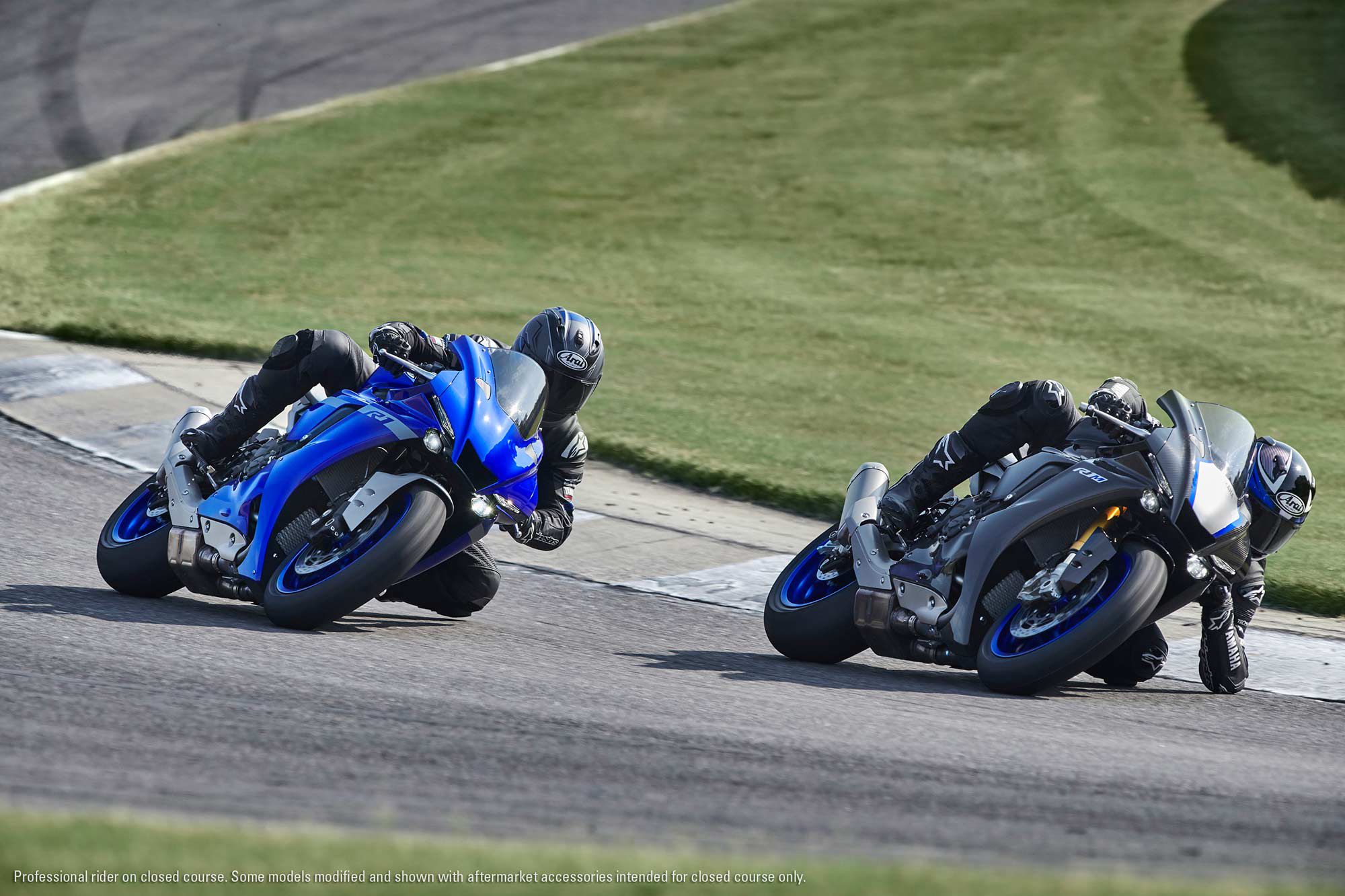
2021 Yamaha YZF-R1 and YZF-R1M. (Yamaha/)
Electronics
As is the case with nearly all premium superbike offerings, the Yamaha YZF-R1 is equipped with an extensive list of electronic rider aids that work directly with a six-axis IMU for precise inputs. Switchable aids like the aforementioned EBM function and Power Delivery Modes, the lean-angle-sensitive Traction Control System, Slide Control System, Lift Control, and a bidirectional quickshifter are technologies derived directly from Yamaha’s racing efforts to enhance the performance of the YZF-R1. A Launch Control function is also equipped if you’re ready for your local club race.
Overall, the electronics’ level of precision has also been a highlight of the R1. The 5-inch TFT display is growing relatively small by the standards set by some competition, but it is the host of an otherwise awesome package.
The up-spec YZF-R1M also is equipped with Yamaha’s Communication Control Unit, enabling smartphone connectivity via the Y-Trac app. Here, you can overlay 16 different data channels—including gear position, lean angle, front and rear brake pressure, throttle percentage, rpm, speed, and more—to study and improve your on-track riding, though we’ve found the app to be somewhat difficult to use.
Finally, a separate YRC app allows the adjustability of the Ӧhlins and electronic rider aids via a built-in Wi-Fi communicator. Dial in your preferred settings, then save it for use later on.
Warranty and Maintenance Coverage
Both the 2021 R1 and R1M come with a one-year, limited factory warranty.
Quality
There is a lot to love about the YZF-R1. Evolutional updates to an astounding platform originally introduced in 2015 kept it a top-tier superbike. The R1M, dressed in that delightfully carbon fiber bodywork and up-spec suspension, takes it a step further.
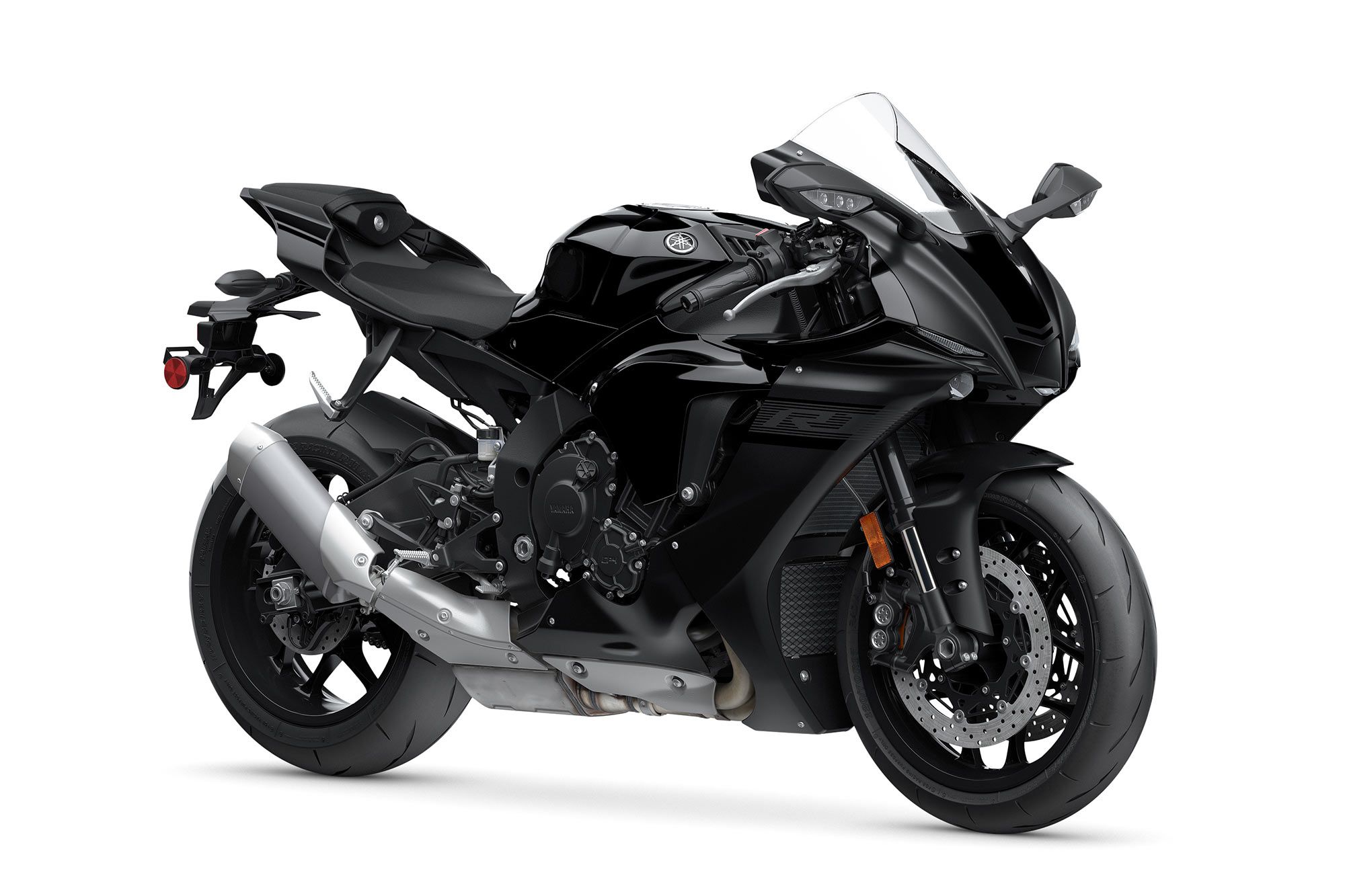
2021 Yamaha YZF-R1. (Yamaha/)
2021 Yamaha YZF-R1/M Claimed Specifications
| MSRP: |
$17,399 (base)/$26,099 (R1M) |
| Engine: |
998cc, DOHC, liquid-cooled inline-4; 16-valve |
| Bore x Stroke: |
79.0 x 50.9mm |
| Transmission/Final Drive: |
6-speed/chain |
| Fuel Delivery: |
Fuel injection w/ YCC-T and Y-CCI |
| Clutch: |
Wet, multiplate slipper/assist; cable actuation |
| Engine Management/Ignition: |
N/A |
| Frame: |
Twin-spar aluminum |
| Front Suspension: |
43mm KYB USD fork (base)/43mm Öhlins NPX inverted fork (R1M), fully adjustable; 4.7 in. travel |
| Rear Suspension: |
KYB shock (base)/Öhlins gas-charged shock (R1M), fully adjustable; 4.7 in. travel |
| Front Brake: |
Radial-mount 4-piston calipers, 320mm discs w/ ABS |
| Rear Brake: |
1-piston floating caliper, 220mm disc w/ ABS |
| Wheels, Front/Rear: |
Die-cast magnesium; 17 x 3.5 in. / 17 x 6.0 in. |
| Tires, Front/Rear: |
Bridgestone Battlax RS11; 120/70-17 / 190/55-17 (base), 200/55-17 (R1M) |
| Rake/Trail: |
24.0°/4.0 in. |
| Wheelbase: |
55.3 in. |
| Ground Clearance: |
5.1 in. |
| Seat Height: |
33.7 in. (base)/33.9 in. (R1M) |
| Fuel Capacity: |
4.5 gal. |
| Wet Weight: |
448 lb. (base)/450 lb. (R1M) |
| Contact: |
yamaha-motor.com |
Source: MotorCyclistOnline.com
